|
Throughout our unit, we've been keeping track of everything we've figured out as it relates to answering our Driving Question. Here is one student's work of their model tracker completed. It's been a great tool to summarize how we've put pieces of information together over time to explain our clean/dirty water phenomenon! Now that our full-scale model is up and proudly displayed with everything we've figured out, we spent some time today thinking about all the problems we identified. But what would a problem be without a solution in place?
So student groups brainstormed possible solutions, and we shared out our ideas in a scientist circle. We then put these solutions into place...and maybe, just maybe, some of these solutions will make the positive impact we are hoping they made on our precious freshwater supply! Now that we figured out about that "mystery pipe," the combined sewer system and outfall pipe, we wanted to update our class model to show this part of the system. We also wanted to see what questions we could answer on our DQB, and spend some time researching ones that were left "hanging." As we close out our unit (for real, now), we want to see how we can turn some of the problems we're noticing into non-problems in the future. The next few days we'll be thinking about how we can develop solutions to these problems and educating our community about what we've figured out these last two quarters!
Students were really interested in knowing where that mystery pipe goes (that doesn't go to the wastewater treatment plant). With some research (thank you to the Friends of the Chicago River and a video we found on YouTube about Milwaukee's system), we uncovered something really astonishing...and actually quite alarming!
The pipe in the sewer is actually known as an outfall pipe, and in situations of heavy rains, it leads directly to the Chicago River. This means that when the sewer system has so much water in it, that the WWTF can't treat the water fast enough, and the reservoir's below the streets can't hold all the water, so the sewage has to go somewhere. Since it poses a health risk to humans, the sewage can't go back into homes and businesses, so the river is really the only option. This got us thinking a bunch of things... 1. This is awful! We shouldn't be sending raw sewage into the Chicago River. That's super harmful to humans who recreate in the river and it's also incredibly dangerous to the wildlife and plant life that call the Chicago River home. 2. Is there a way for us to not have the sewers so full of water when it rains? Are there ways we can reduce our impact on the already strained system during heavy rains/flooding? This is especially the case when our city is covered in impermeable surfaces and runoff is a huge problem (leaving little water from naturally entering the ground). 3. We're thinking that WE CAN MAKE A POSITIVE IMPACT! We began brainstorming some ideas about solving this HUGE problem!!! Way to go 5th graders! Room 307Room 306We put everyone's part of the model today, putting the pieces together to answer our Driving Question for the unit. We offered critical feedback in terms of celebrations (things groups did really well to showcase their portion of understanding of the DQ) along with limitations to each others' work. We felt really proud of our class model! But then came the truth. There are problems we've uncovered that are part of this model. Like the fact that people are wasting water in their homes and businesses. We know all this water leads eventually to the WWTF and the ocean. There's very little freshwater on the Earth compared to the amount of salt water, and it seems like we're not working hard to keep it as freshwater. We also figured out that there were a lot of problems regarding runoff--for what it brings into fresh bodies of water along with how it prevents water from going into the ground, and instead ends up in our sewers. We are thinking we should be developing some solutions to combat these problems, and figure out ways to keep more freshwater either on the surface in various bodies of water or in the ground. But until then, we're really still curious about that pipe that doesn't lead to the WWTF. Where exactly does that pipe lead to? Is that pipe a problem, too? Or can it help with a solution to all these other problems we identified? Room 307: Problems IdentifiedRoom 306: Problems IdentifiedIt was a 100% YES! from the class when Mrs. Brinza has the class if they felt they had answered the Driving Question for the unit: Where does our clean water come from and where does it go once we make it dirty? So when asked if they wanted to go big or go home, students said, GO BIG! We brainstormed parts to the answer to our DQ (our model trackers really helped with this), assigned parts of the model tables, and each table was responsible for creating that part of the model. We put all the pieces together to show our our scientific models and explanations...AS A CLASS...could answer our Driving Question! Here are the students working at the beginning and middle of model-making: And here are our FINAL models! Room 306Room 307The water cycle, driven by the sun's energy! We watched some videos and saw a model to show the processes many of us already knew about, extending our knowledge of how infiltration and runoff add to this process. We'll be putting all our ideas together to model our Driving Question next week, figuring out if there's anything we might have missed! ;-)
From the video on what happens inside the purification plant, we were THRILLED to know that some of the same things that groundwater does to water outside is so similar to what goes on at the purification plant! We summarized our findings into this model below: This got us thinking about the water in Lake Michigan from a whole other perspective. Is it possible that the lake runs out of water since we're taking so much of it to be purified every hour? Every day?
We think no. So how does it get refilled if it doesn't run out? We developed some initial models and created a class list for all the ways Lake Michigan could possibly refill! We're going to nail down exactly how this happens as we're close to finishing our unit and are ready to tackle our DQB!
We're back after winter break and SUPER close to finishing our water unit! We started today with a recap of what we've figured out so far, remembering that we are trying to figure out how the purification plant actually adds things to water, all while removing things, too. We also remembered that the things in the water that we are able to test are dissolved, and we're trying to put all the pieces together about how something that is dissolved can be removed from the water. We rebuilt our models today in pairs, offering feedback to others in the form of questions.
We sat in a scientist circle to make sense of what new pairs of students decided could possibly be the means for how substances could be added and removed from our water supply knowing they are so small.
In our circle we figured out: 1. Adding stuff: We figured out there must be some sort of sensor that measures what's in the water and how much is needed. While people could do this, we think there's some sort of machine that adds just the right amount of whatever is needed. 2. Removing stuff: While microbes could eat dissolved stuff, microbes produce waste, and eventually they would die. This had us thinking that there would need to be a way to get rid of dead microbes and their waste, as these things are not in our drinking water. 3. This led us to thinking about other ways in which dissolved stuff could get removed from water. We know that traditional filters or nets have holes that are too big. We went back to our model tracker to see if there was anything we've figured out in the past that could help us determine how our water could be filtered... AND THEN WE THOUGHT OF... Groundwater! People who use groundwater have wells that naturally use the earth's materials (soil, sand, gravel and bedrock found in aquifers) to filter out anything dissolved in the water as it trickles to the base of the well. We're now thinking that maybe the purification plant adds stuff with machines and takes stuff out with earth materials! We built a class consensus model for our thinking:
We then felt so confident about our sense-making that we wondered if it was really happening at the City of Chicago's Purification Plant. So an investigation idea was to go to the plant (which 5th graders can't because they're not old enough), but there's a video that exists of the processes that happen there!
|
Driving QuestionWhere does our clean water come from and where does it go once we make it dirty? Archives
February 2019
|

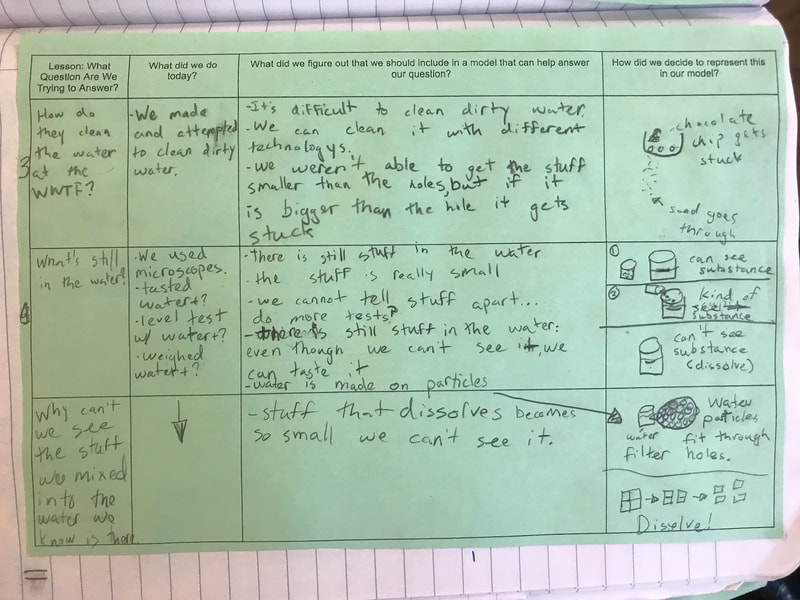
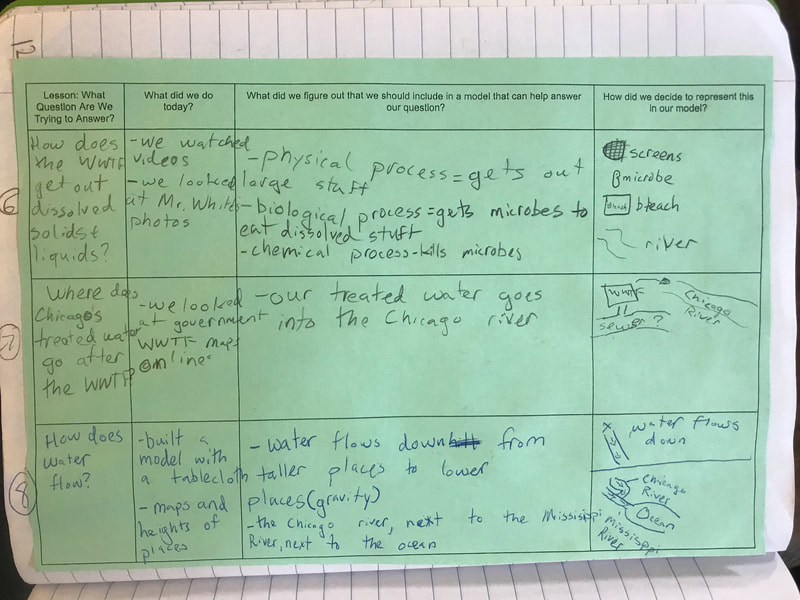
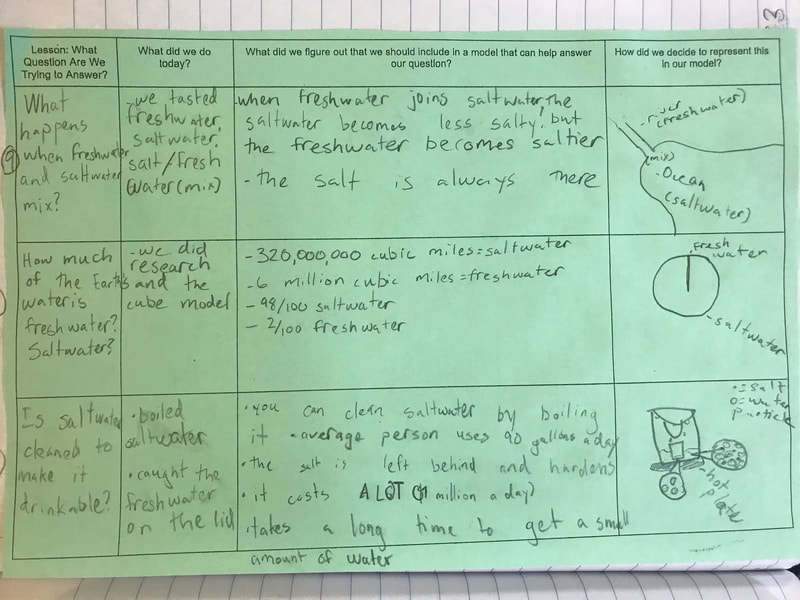
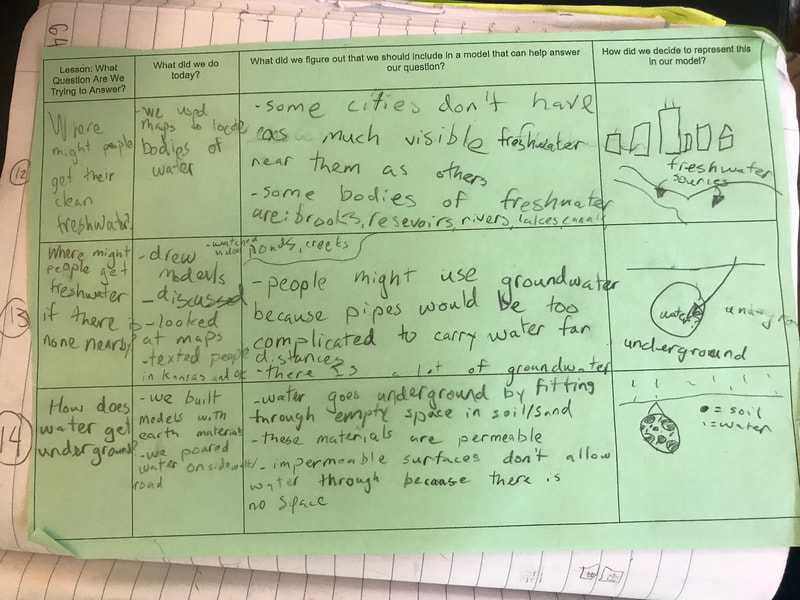
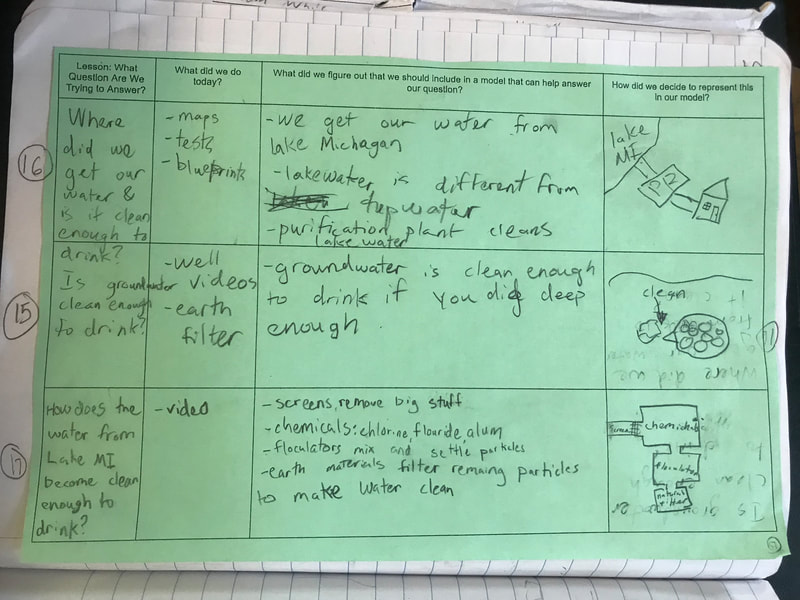
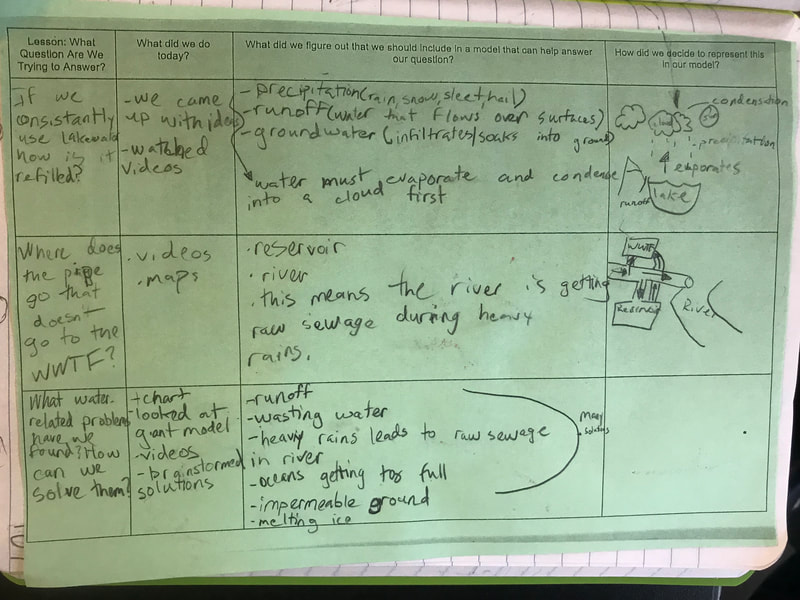
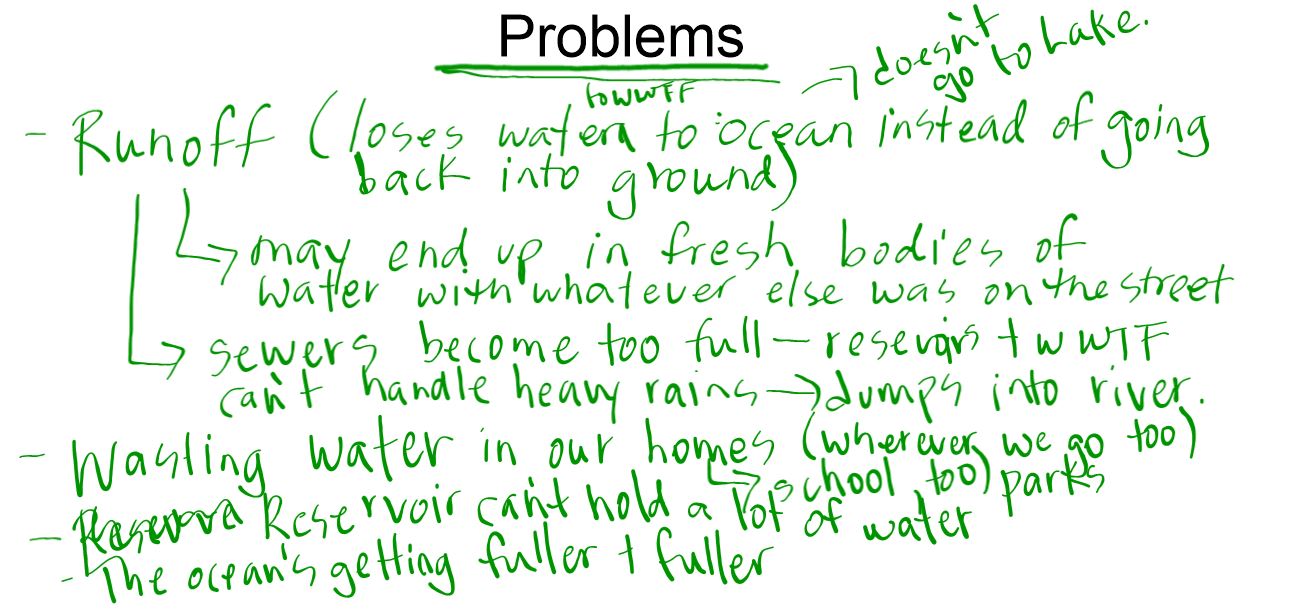
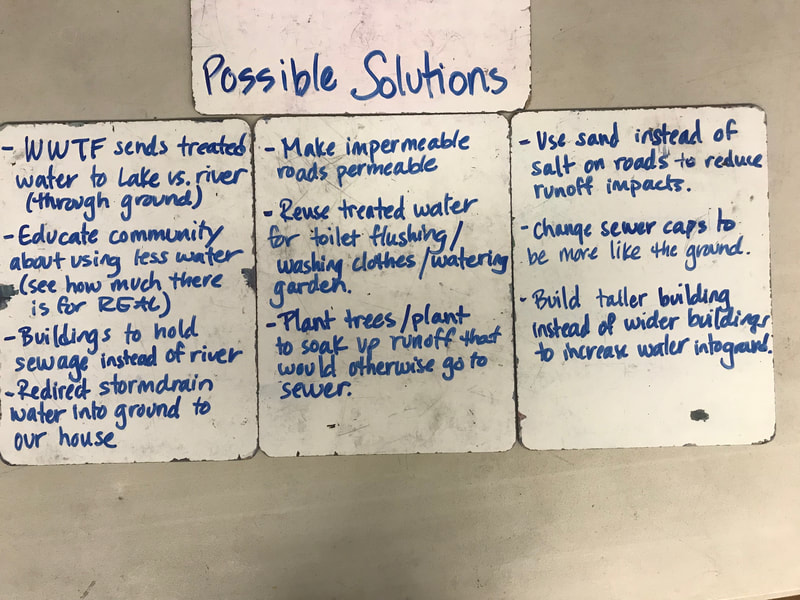
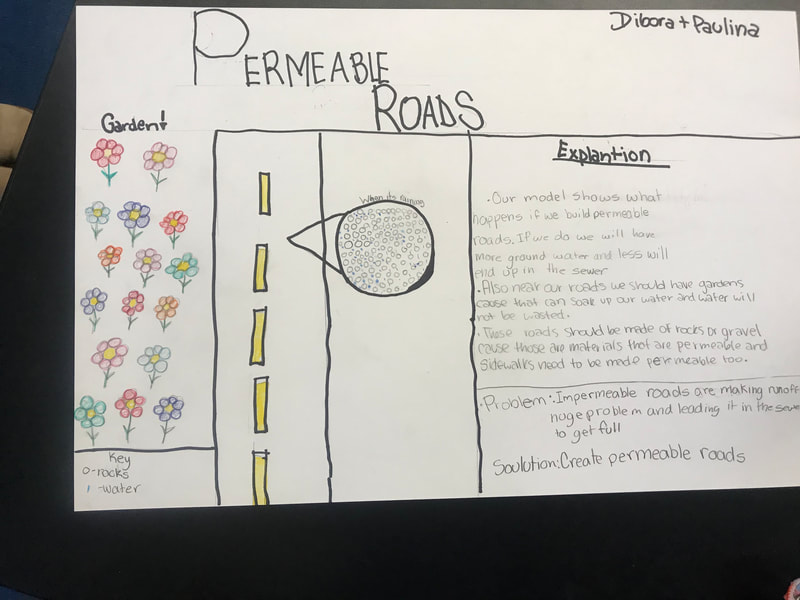
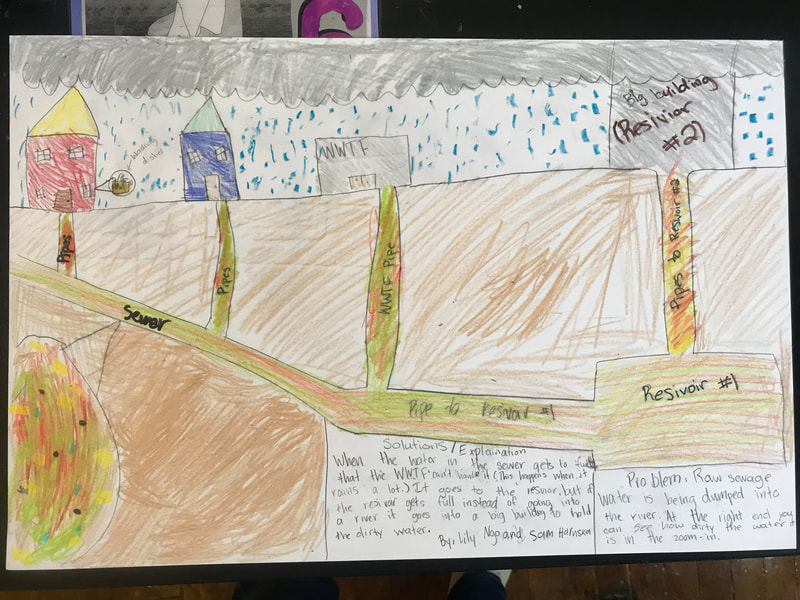

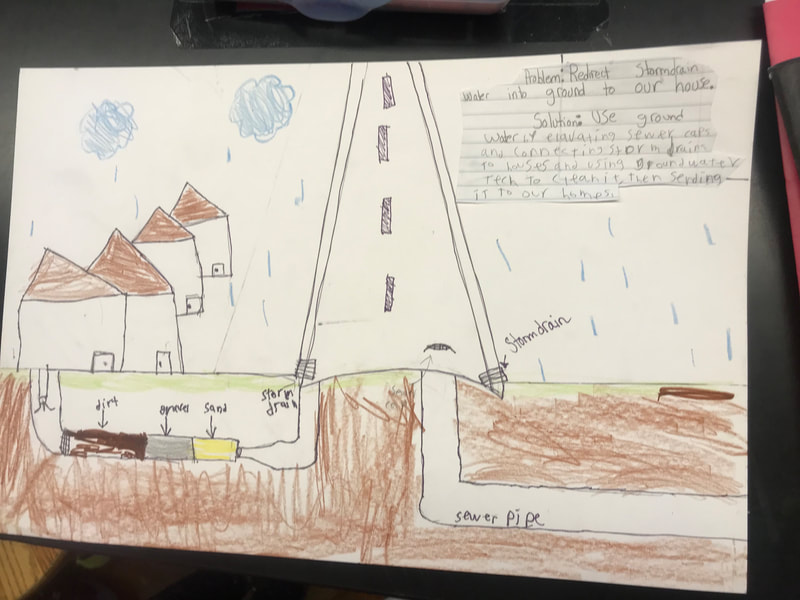
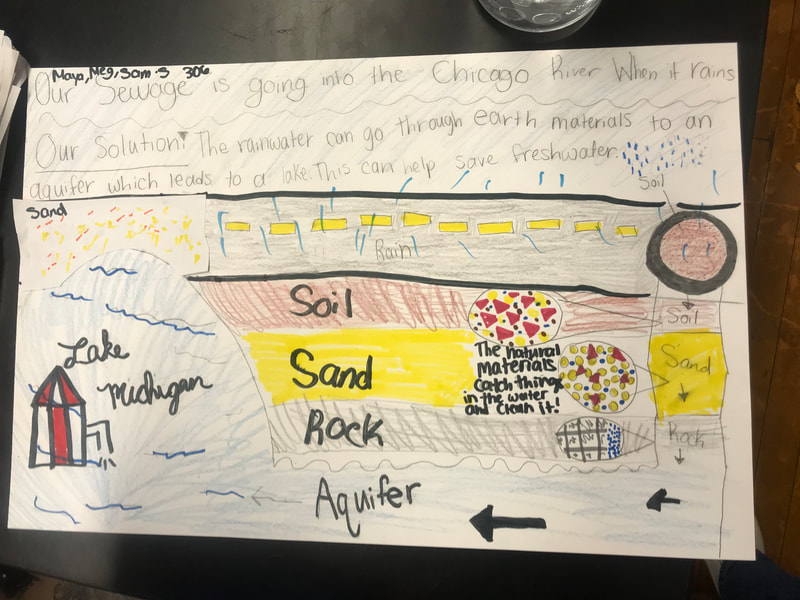
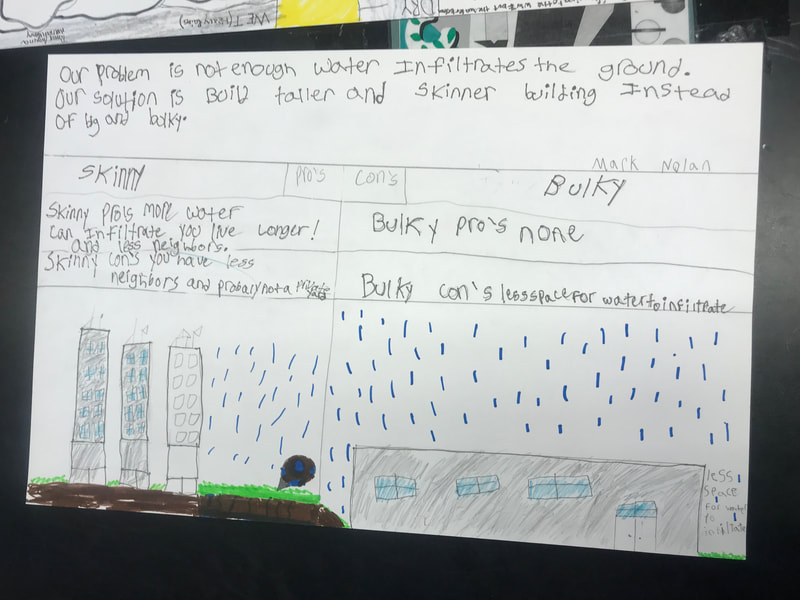
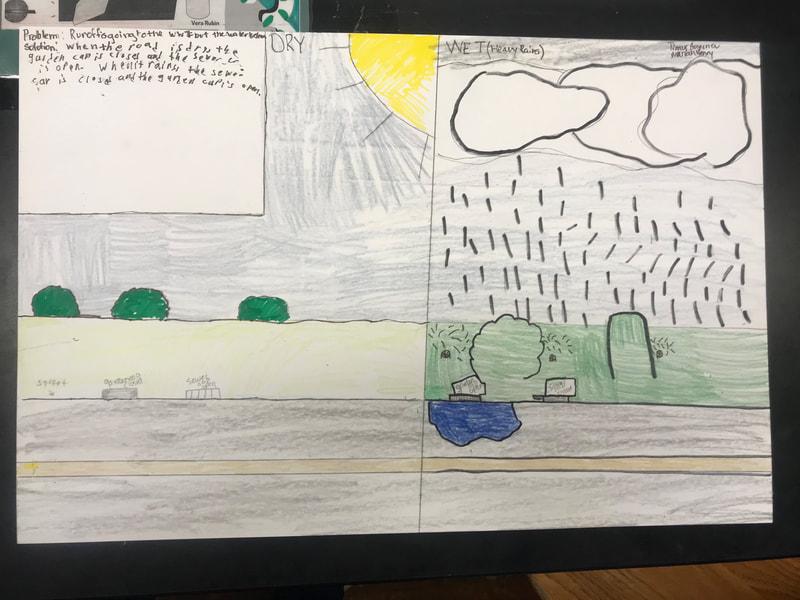
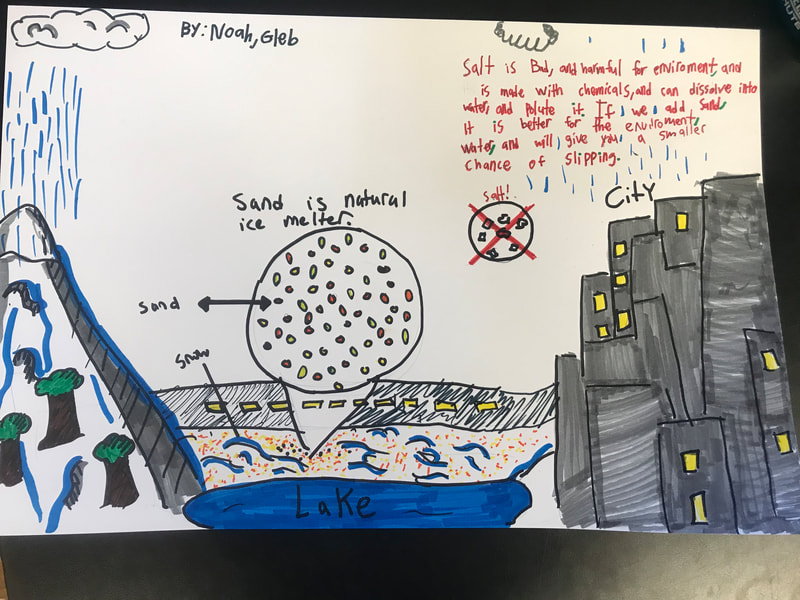
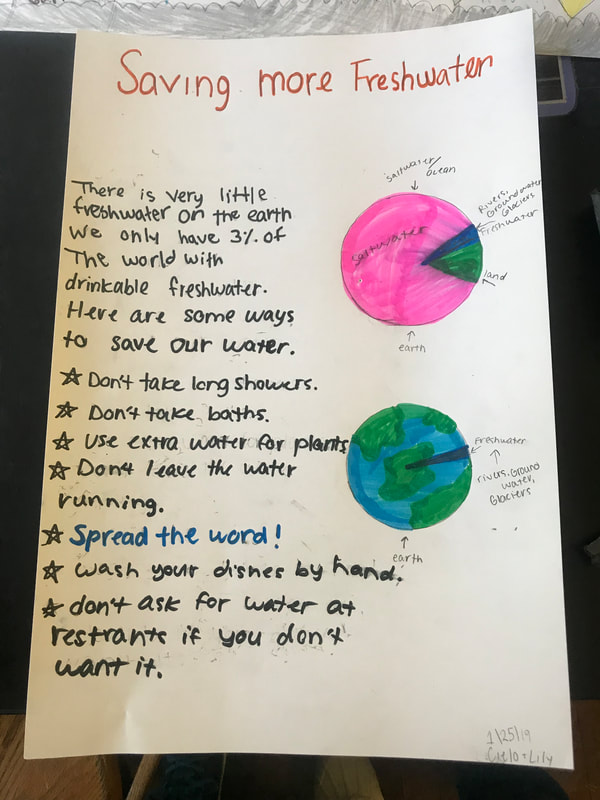
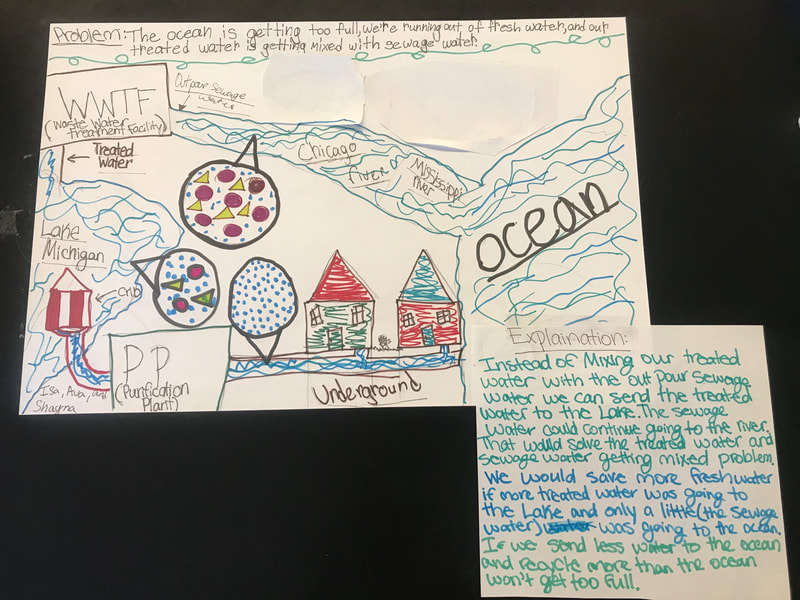
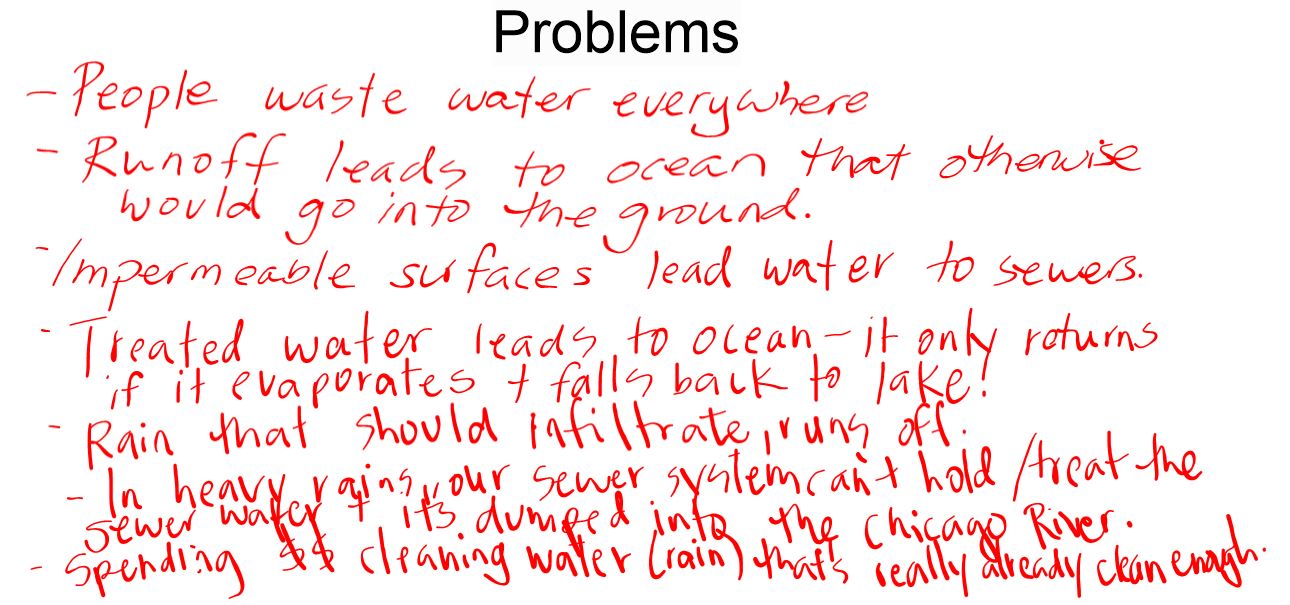
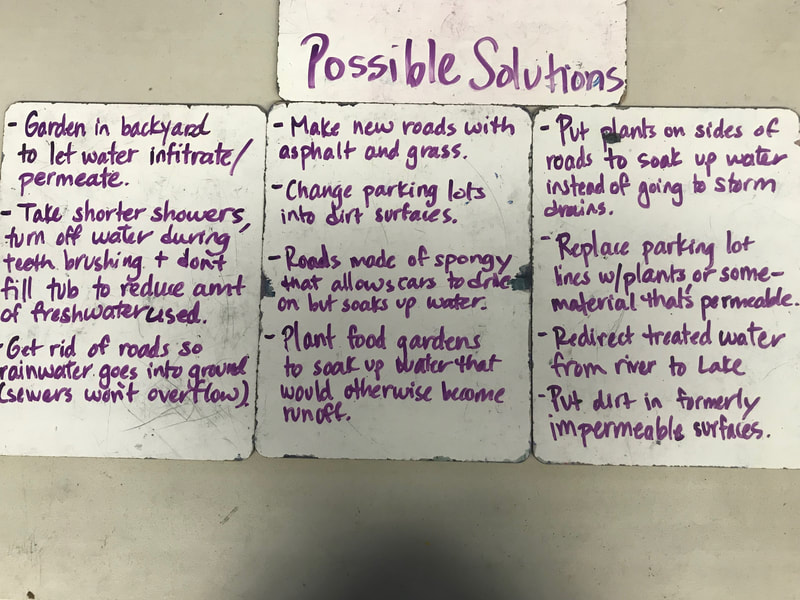
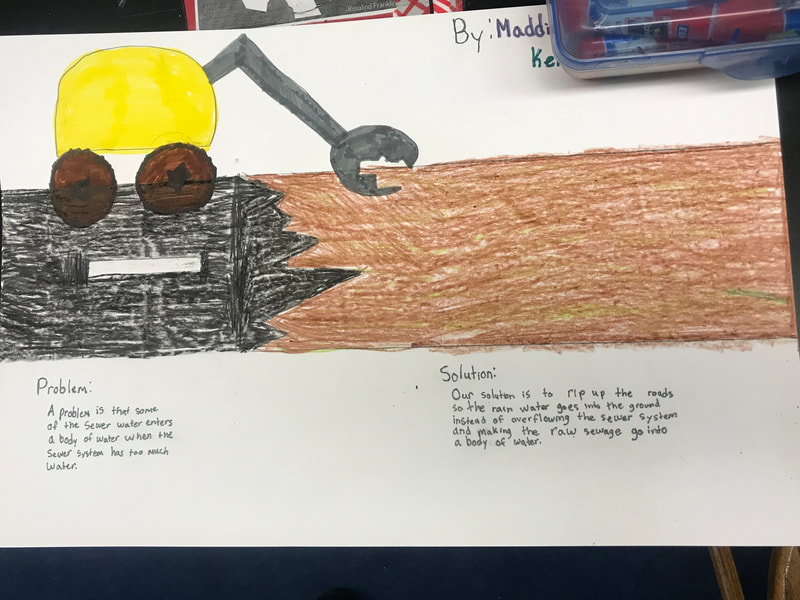
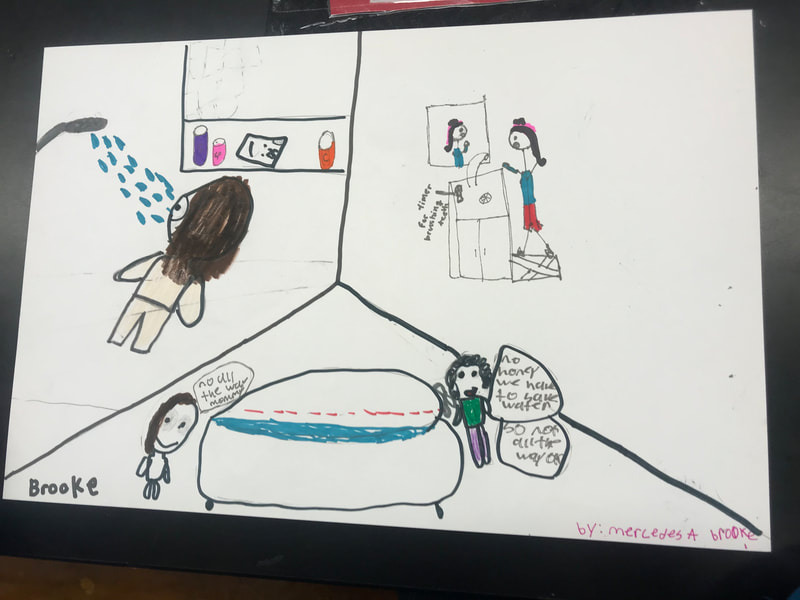
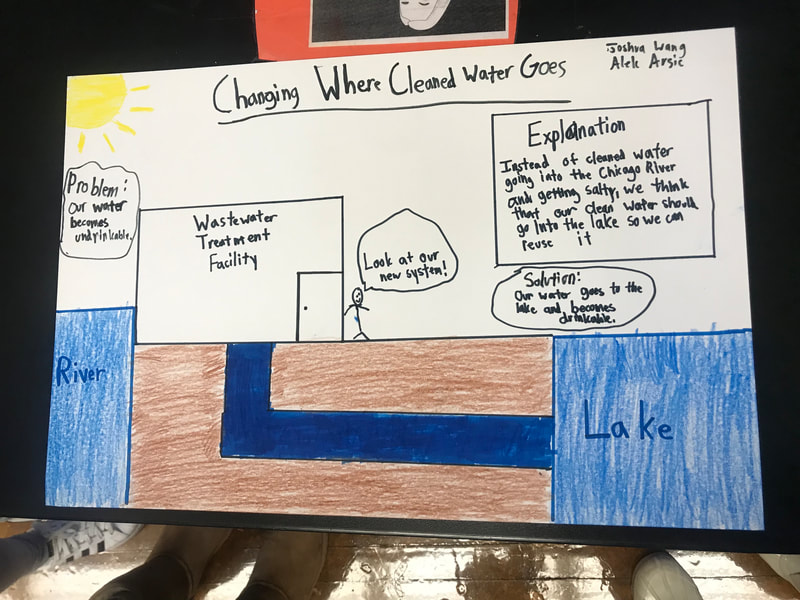
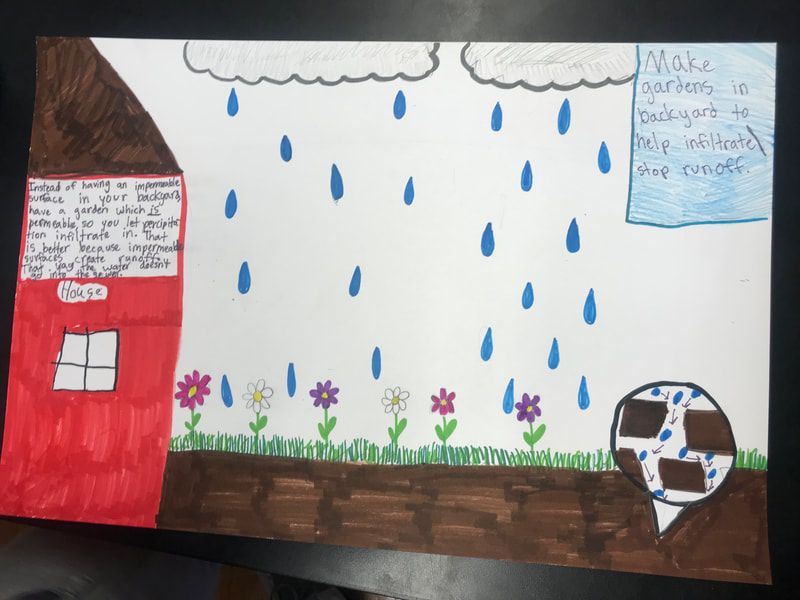
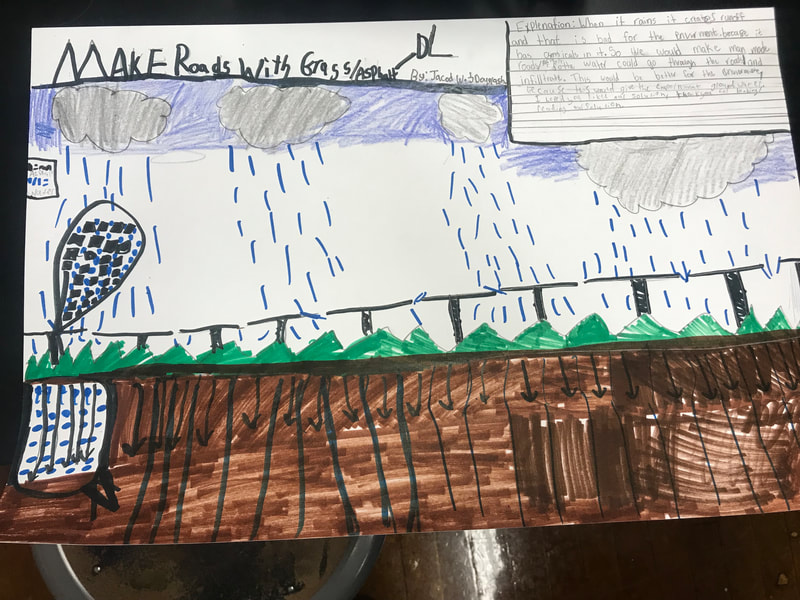
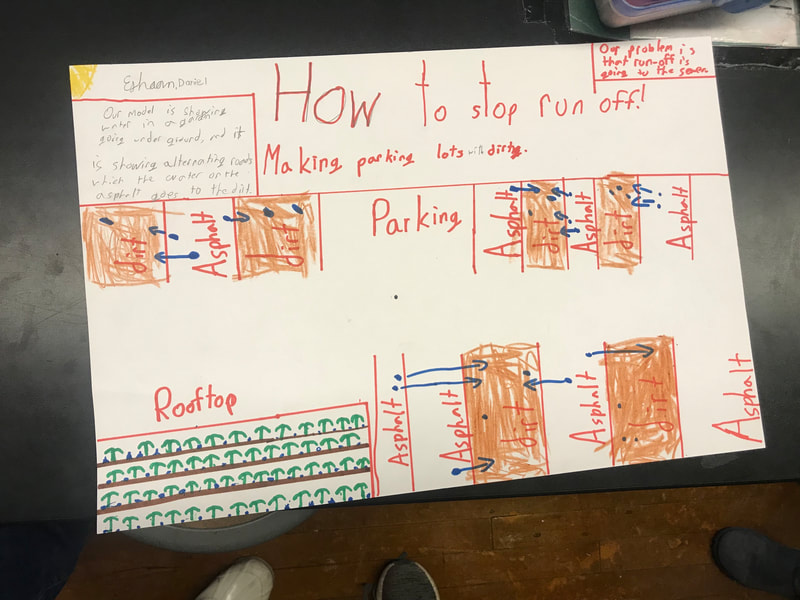
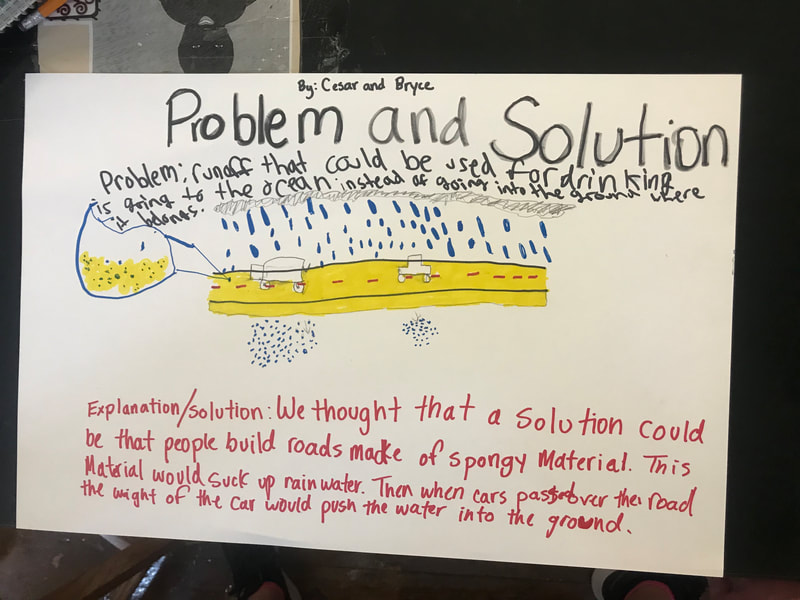
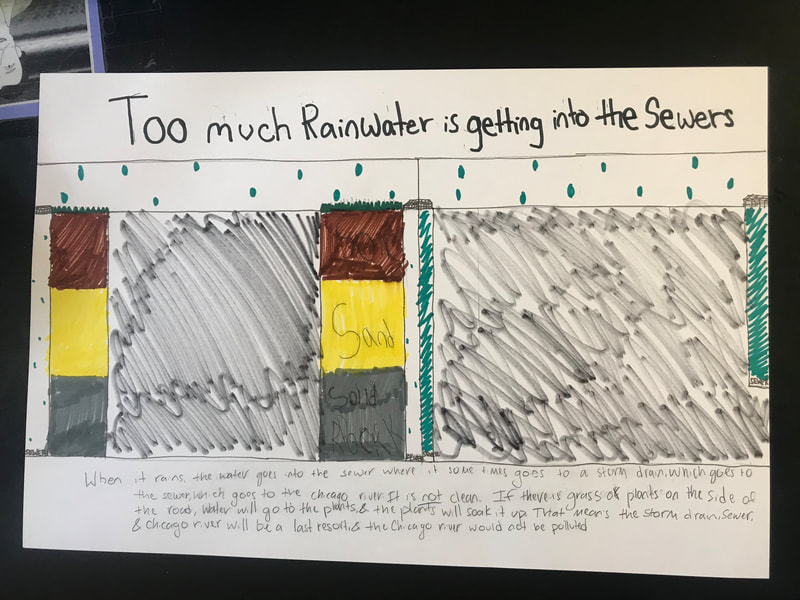
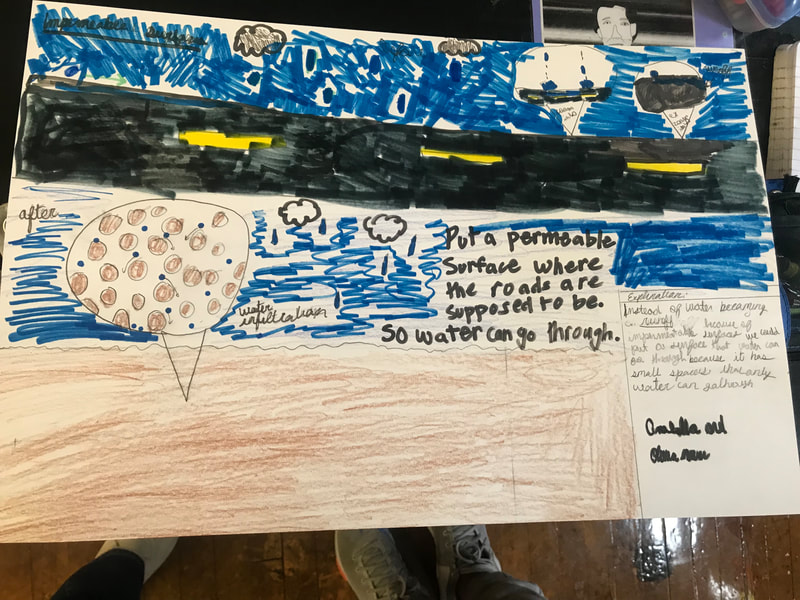
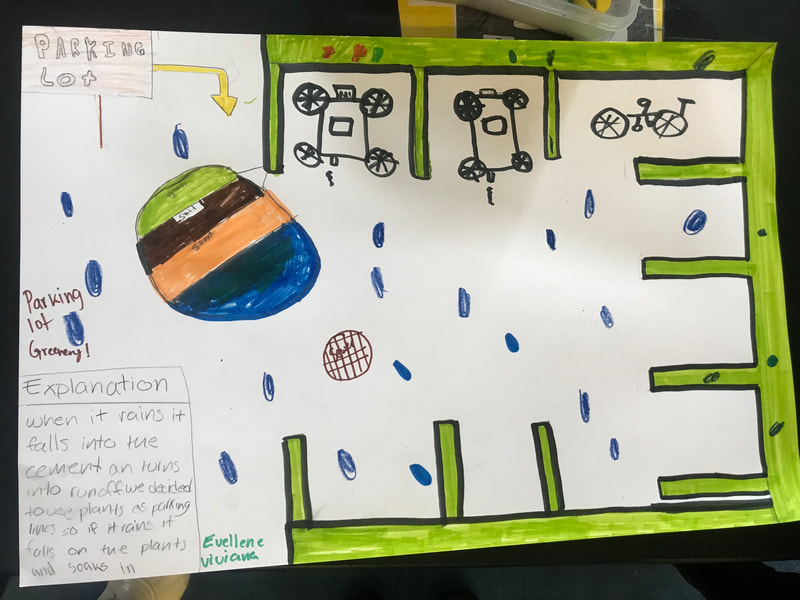
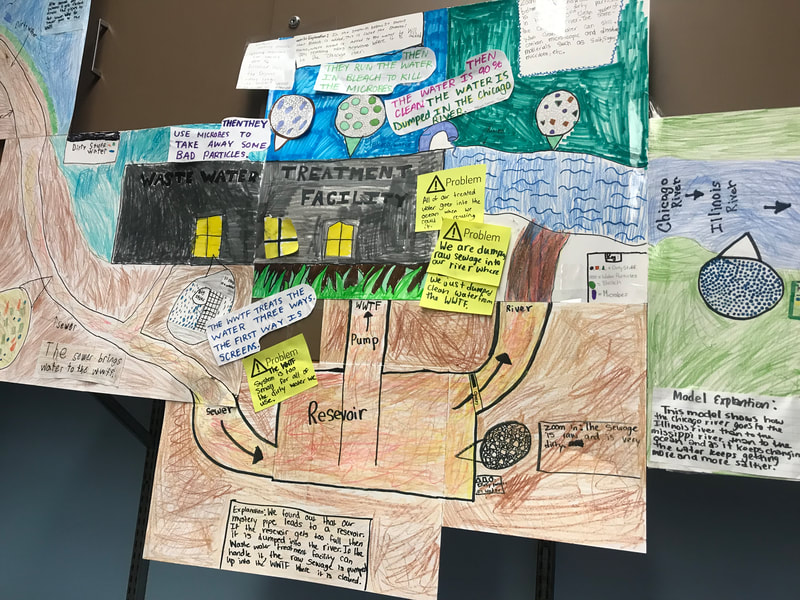
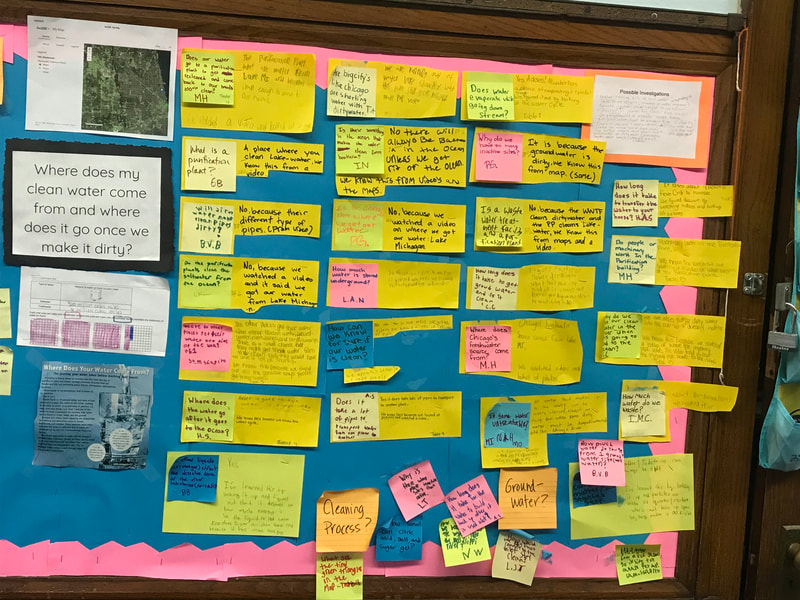

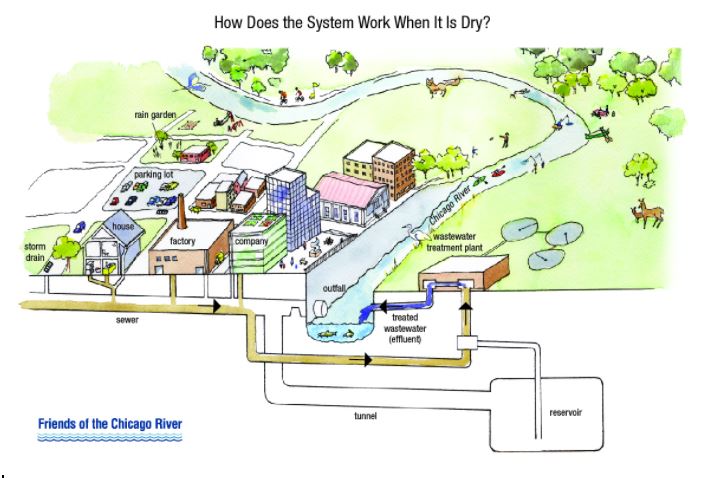
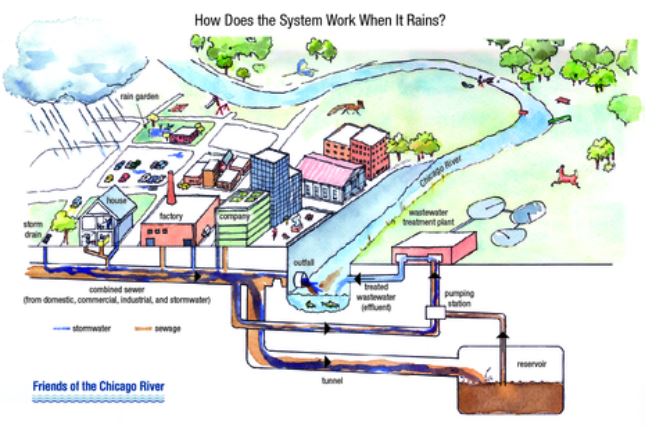
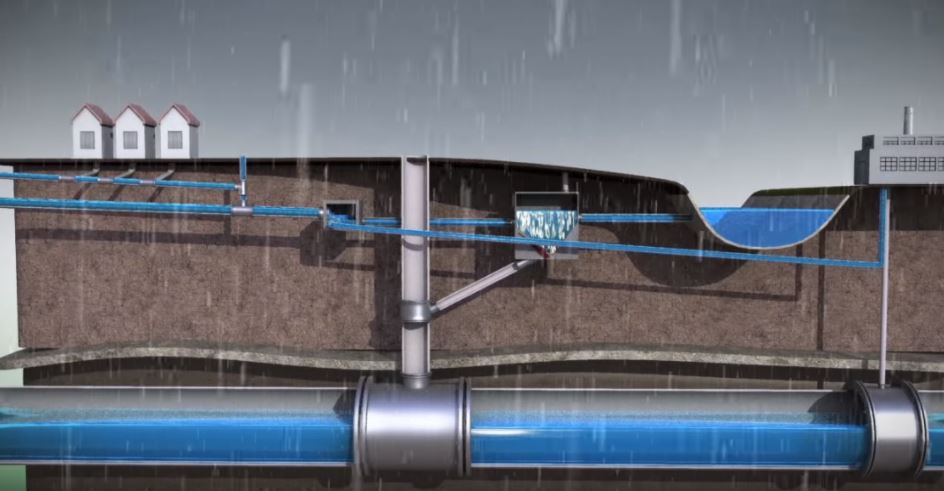
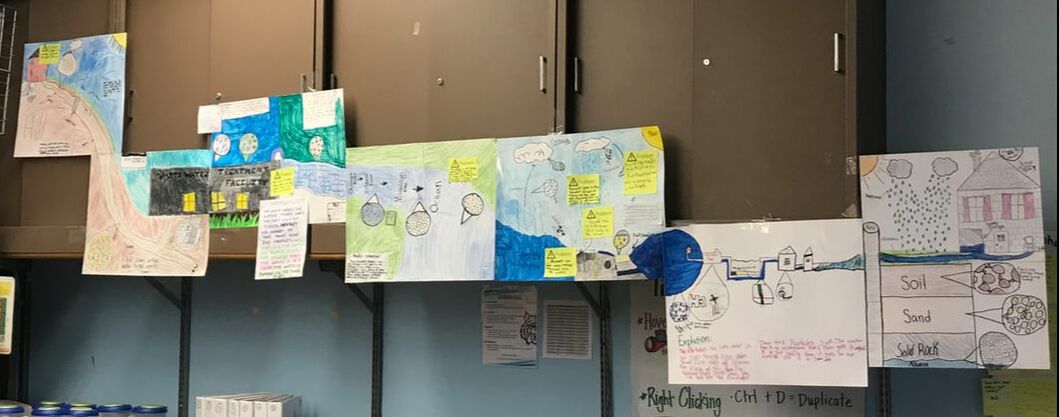

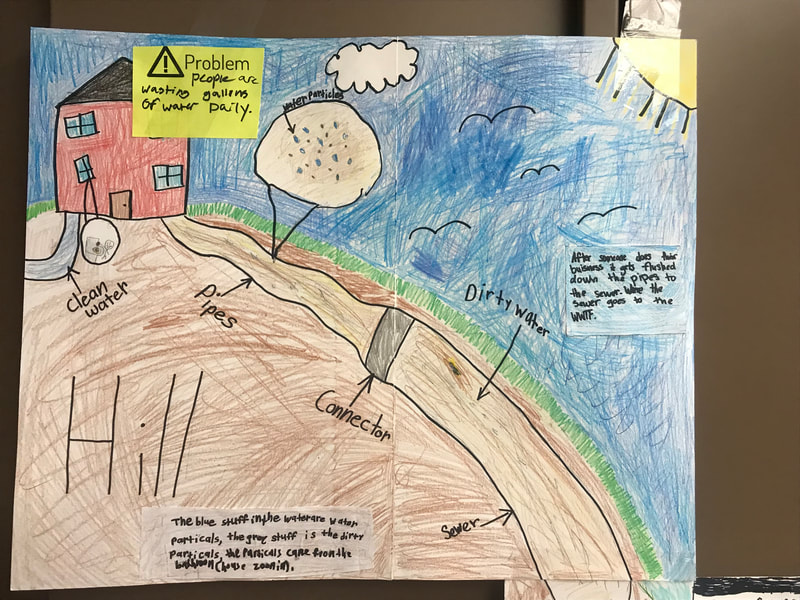
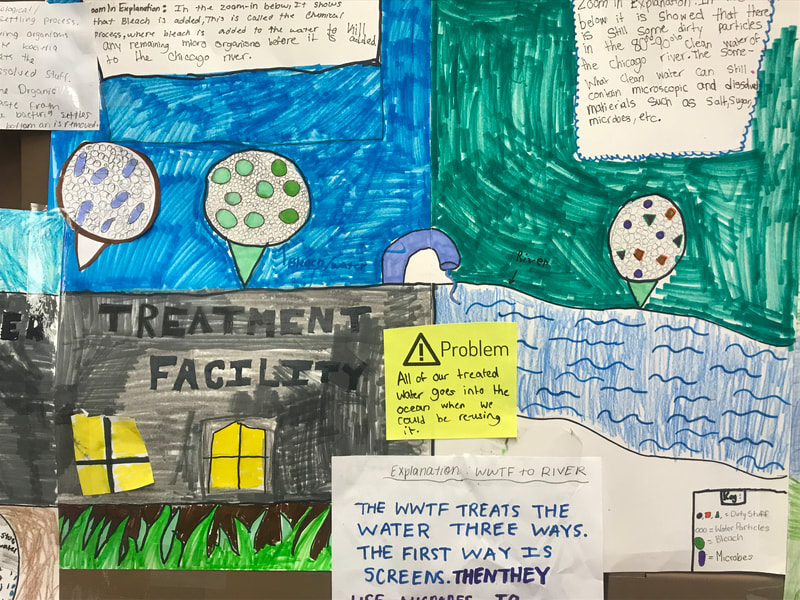
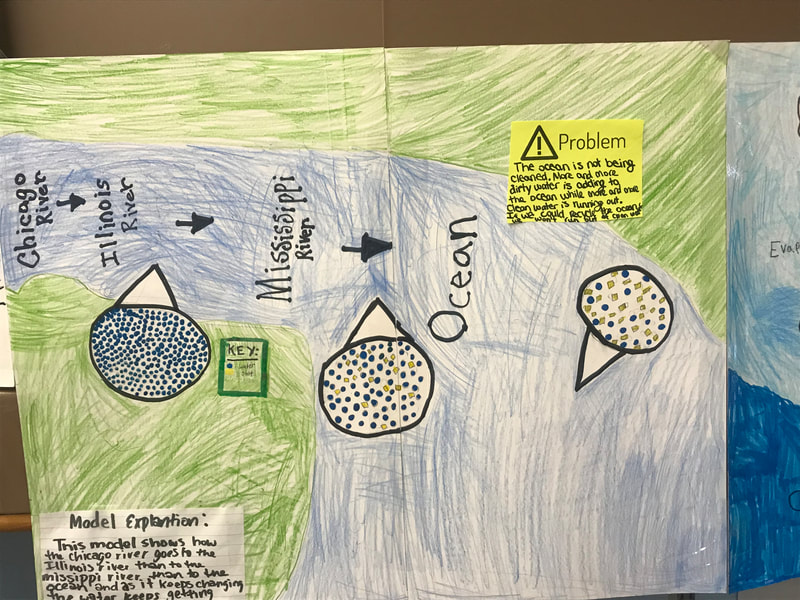
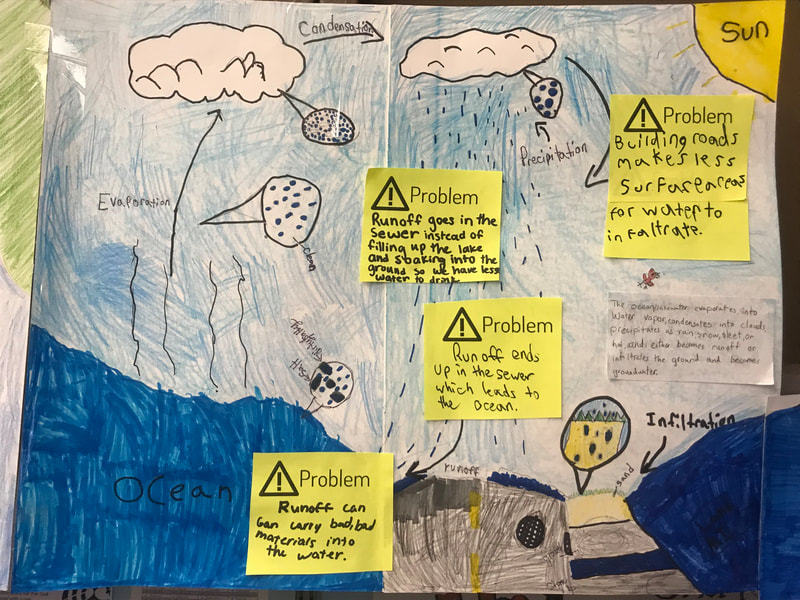
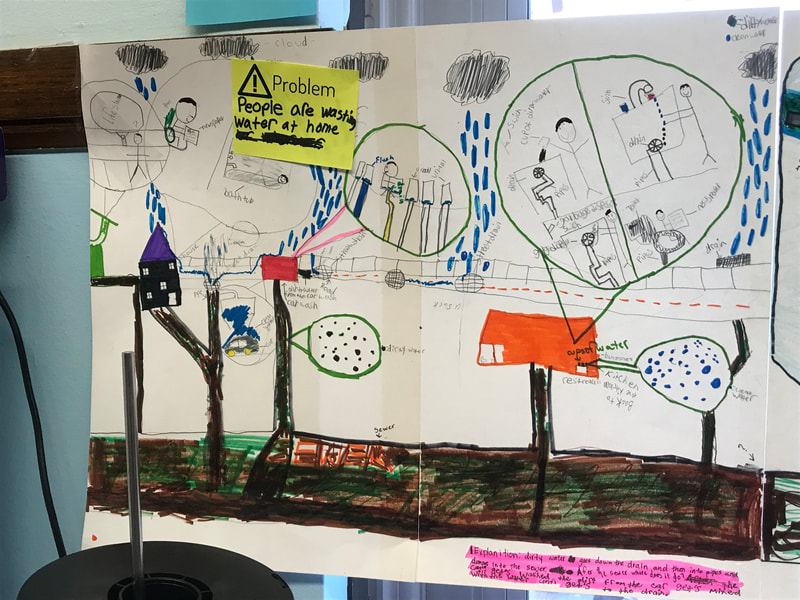
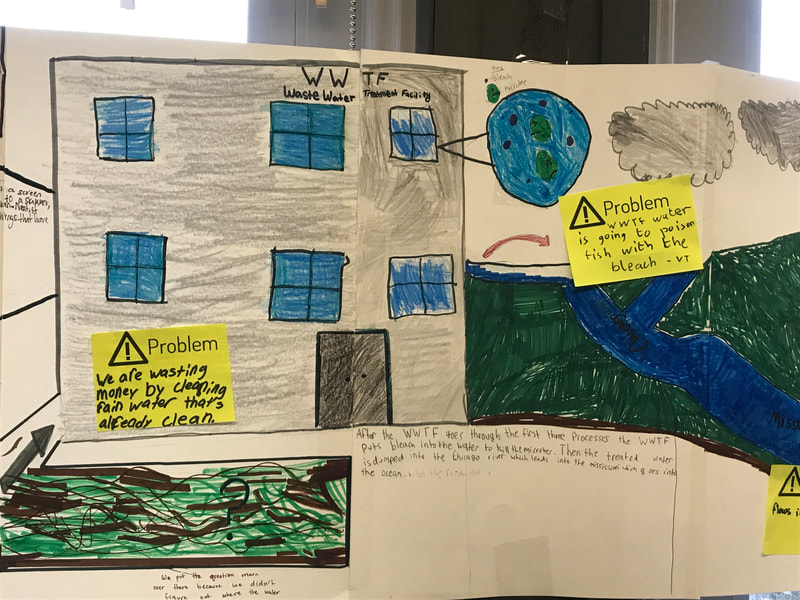
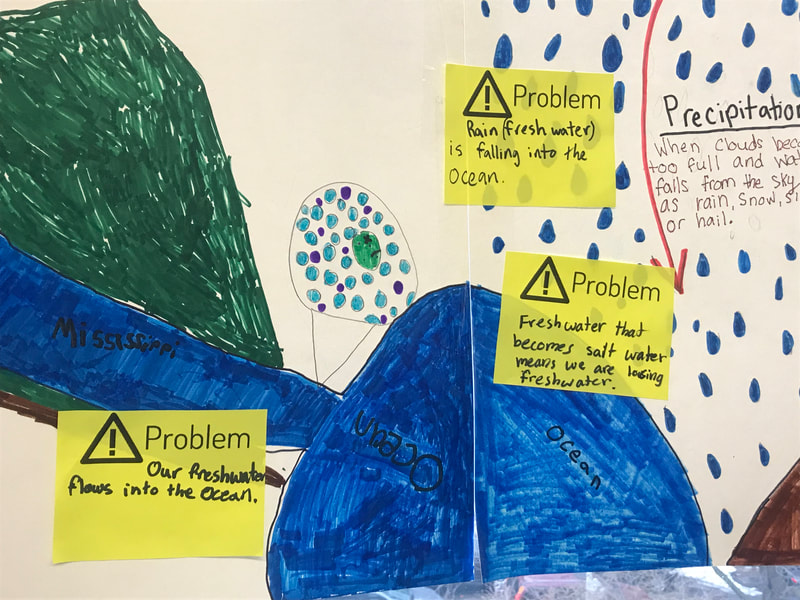
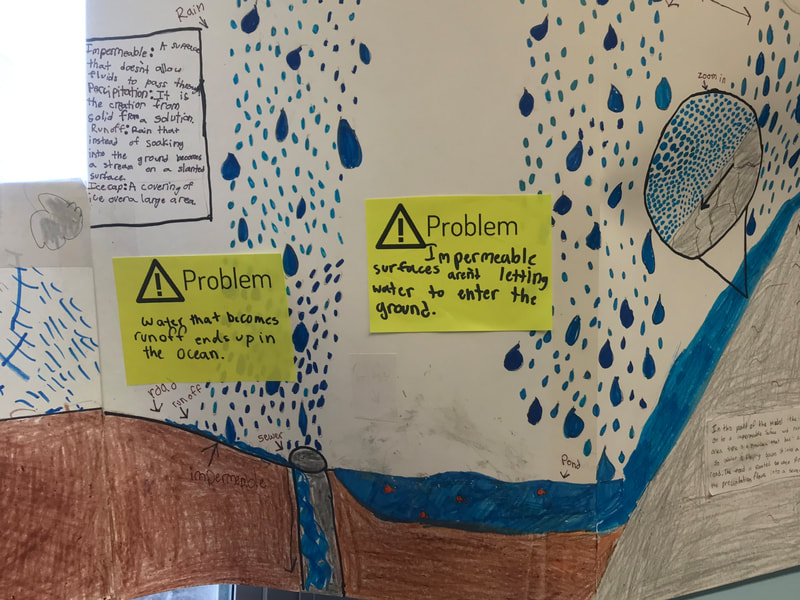
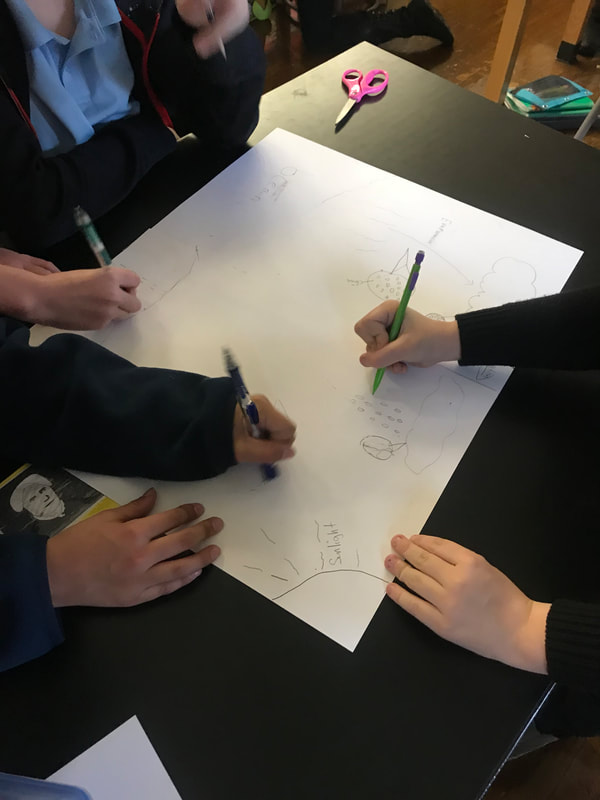
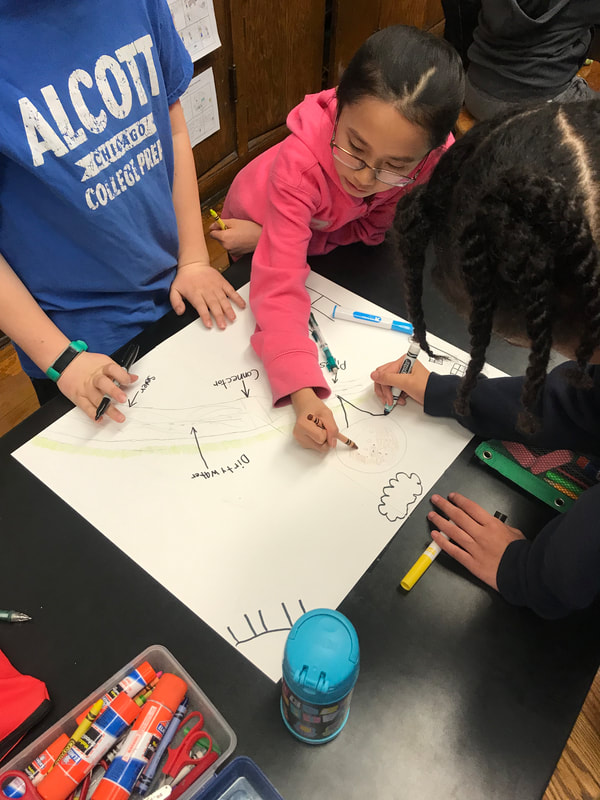
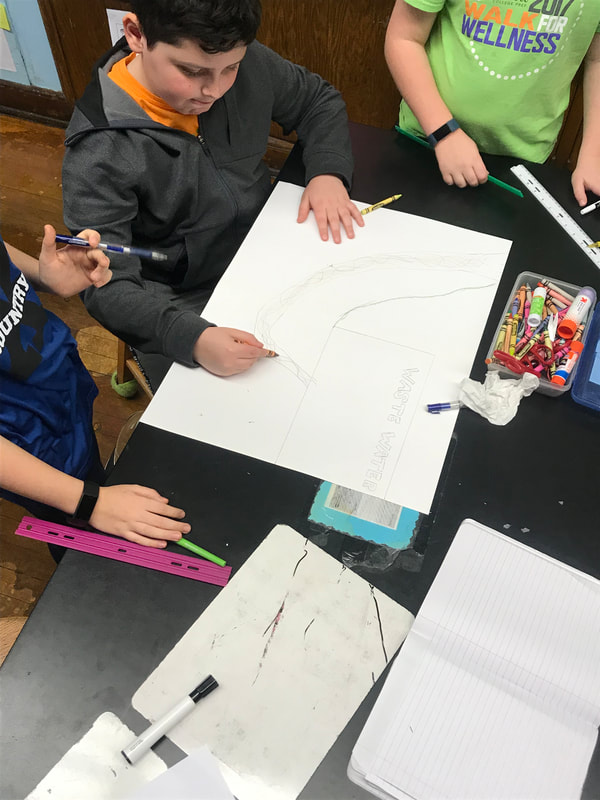
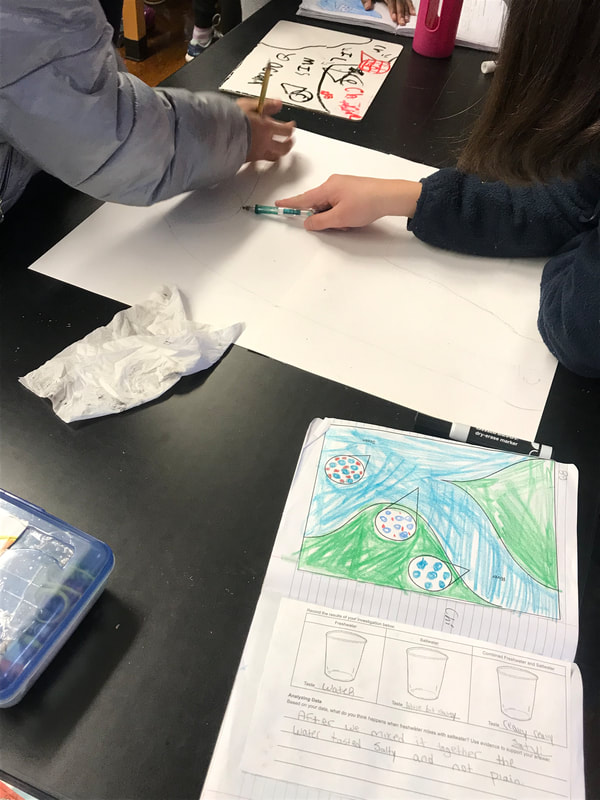
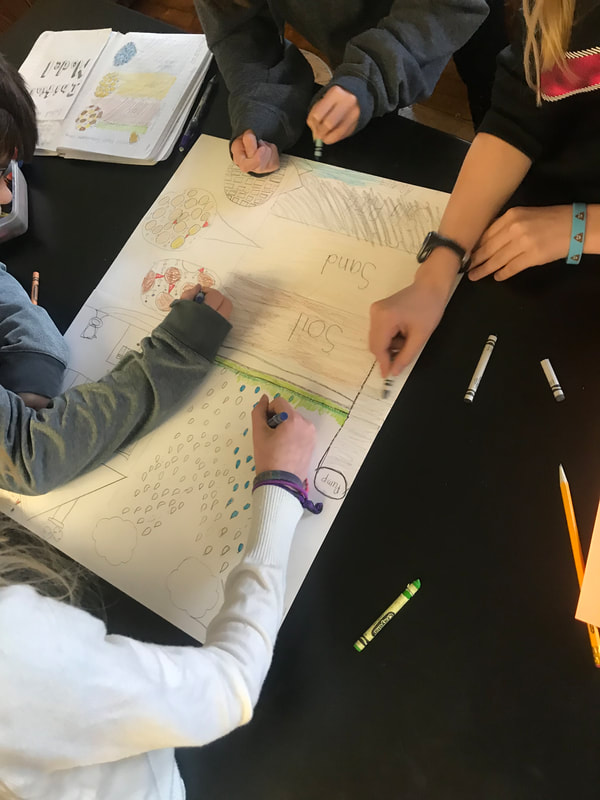
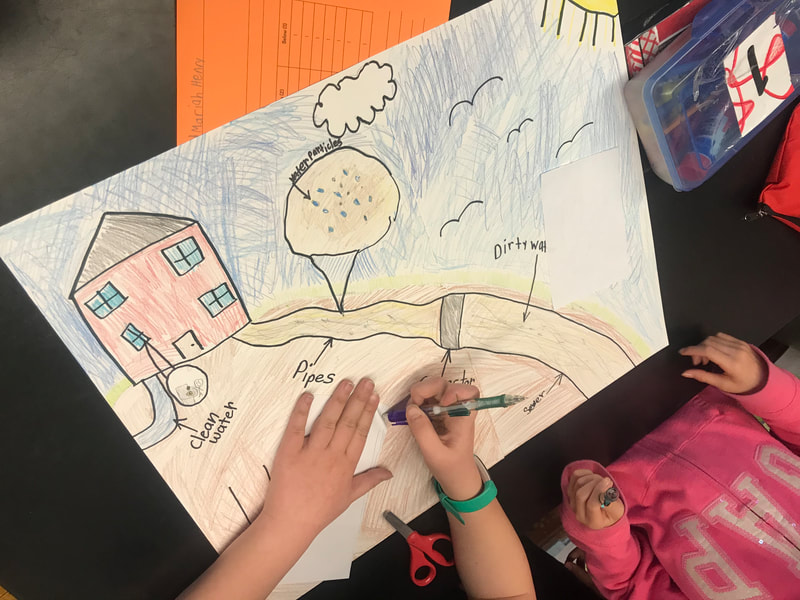
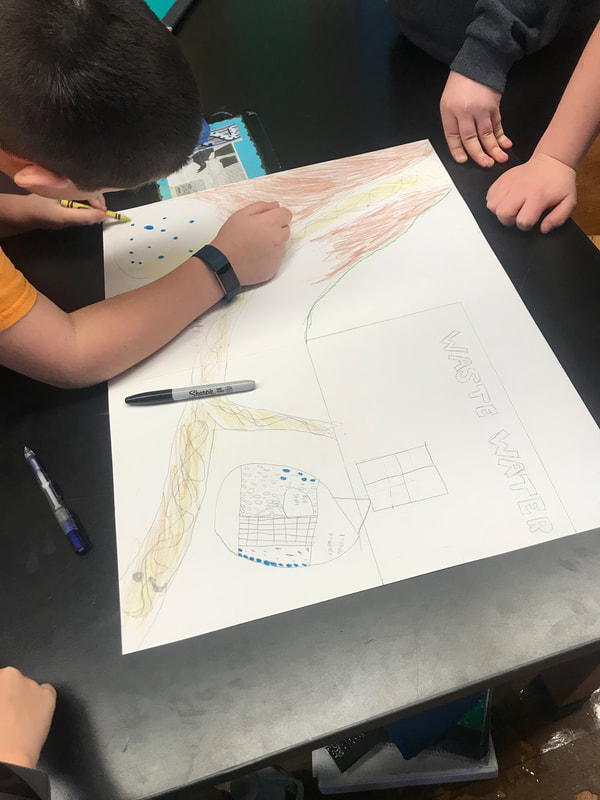
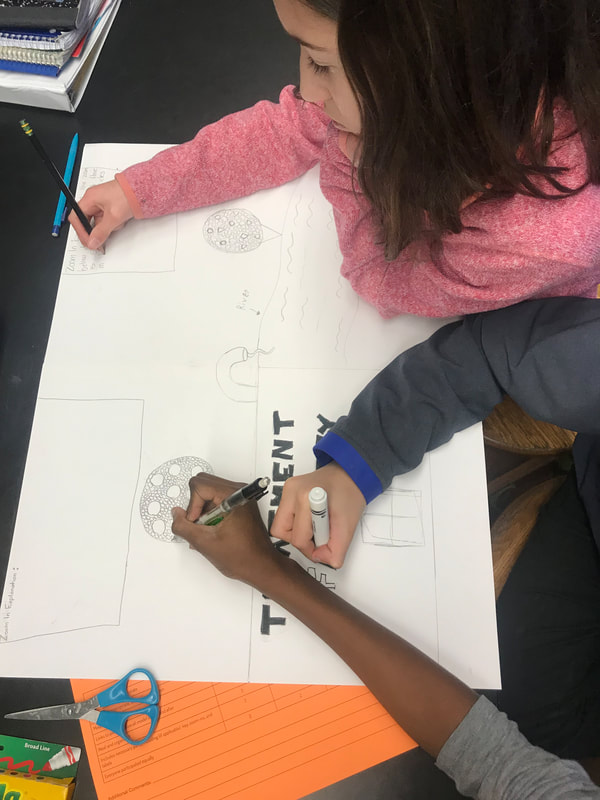
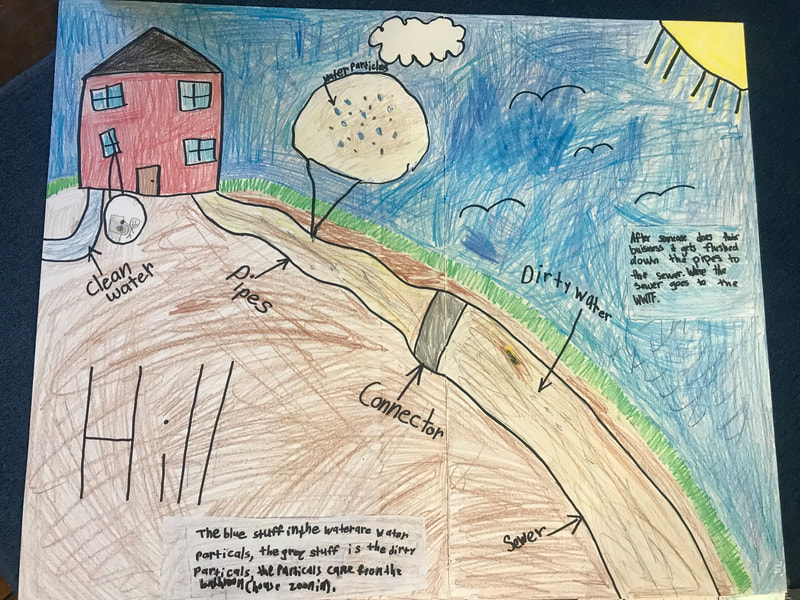
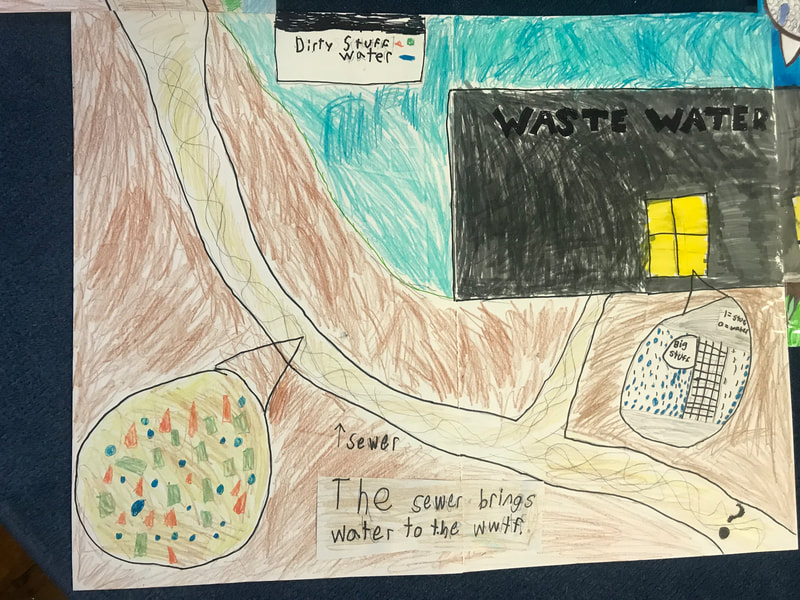
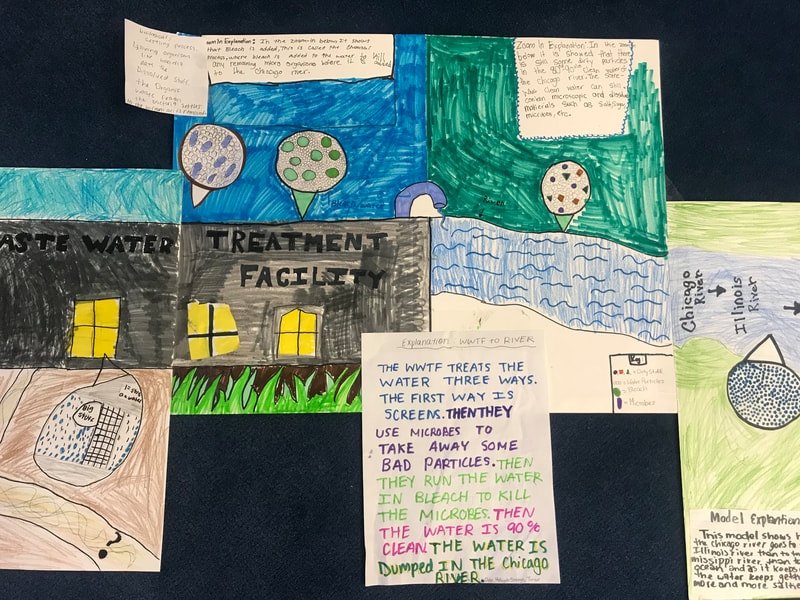
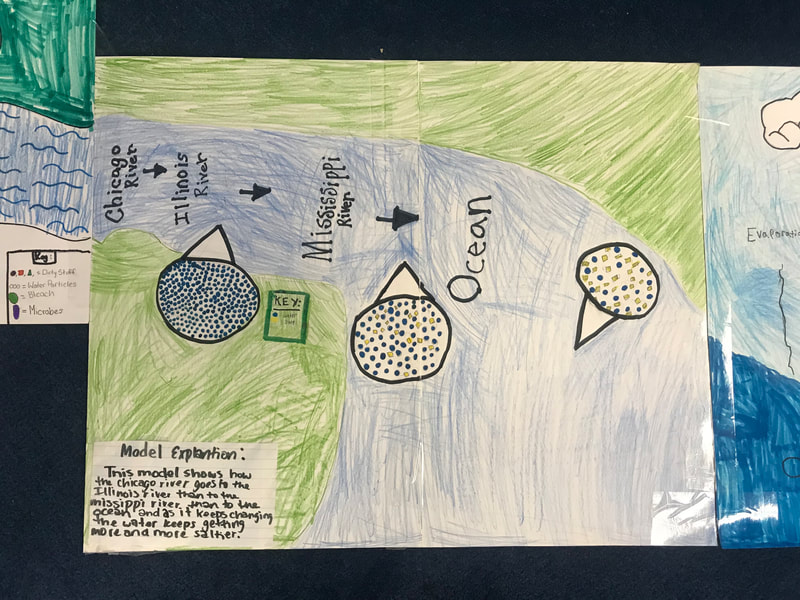
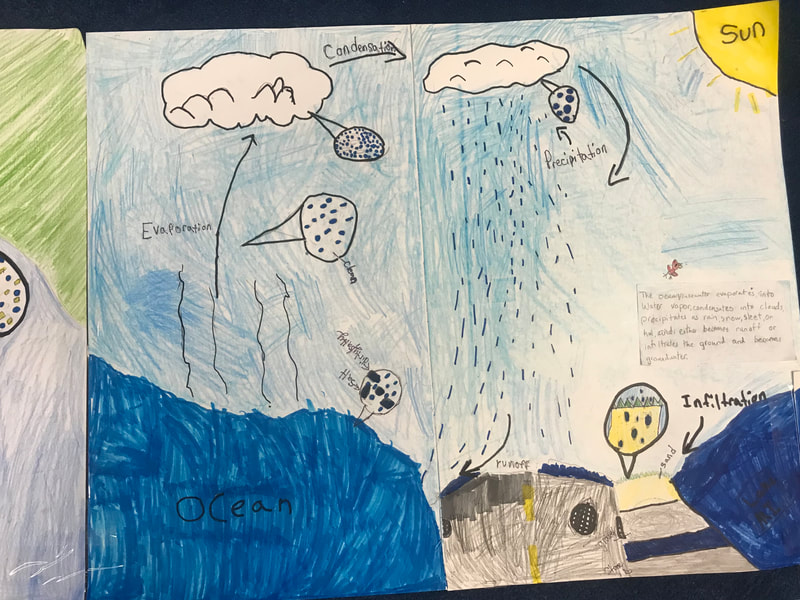
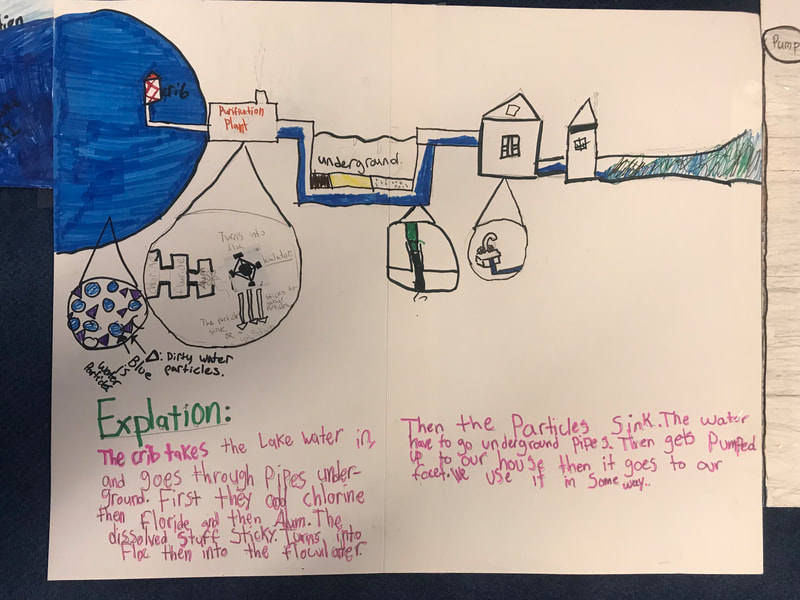
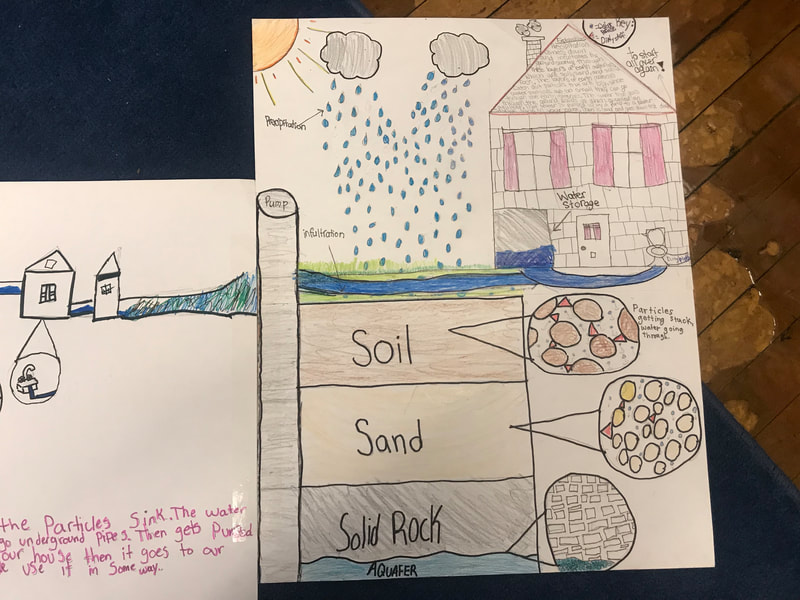
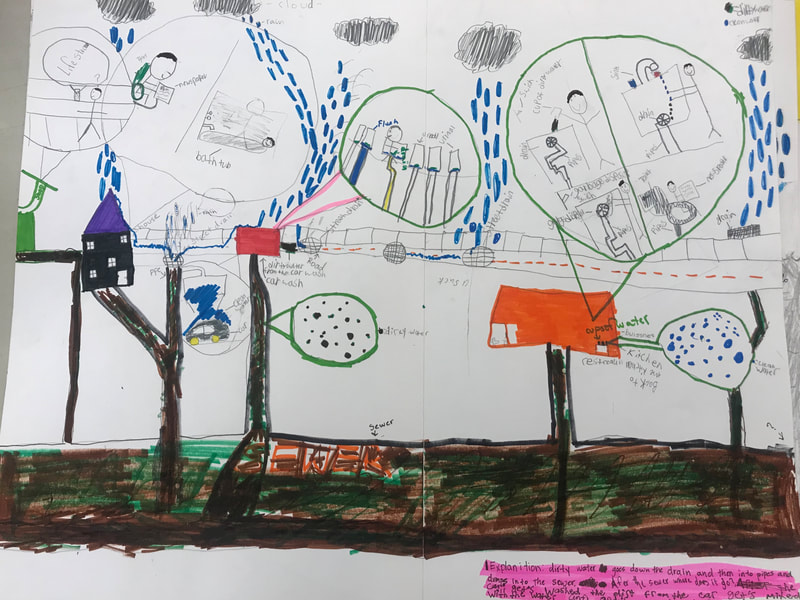
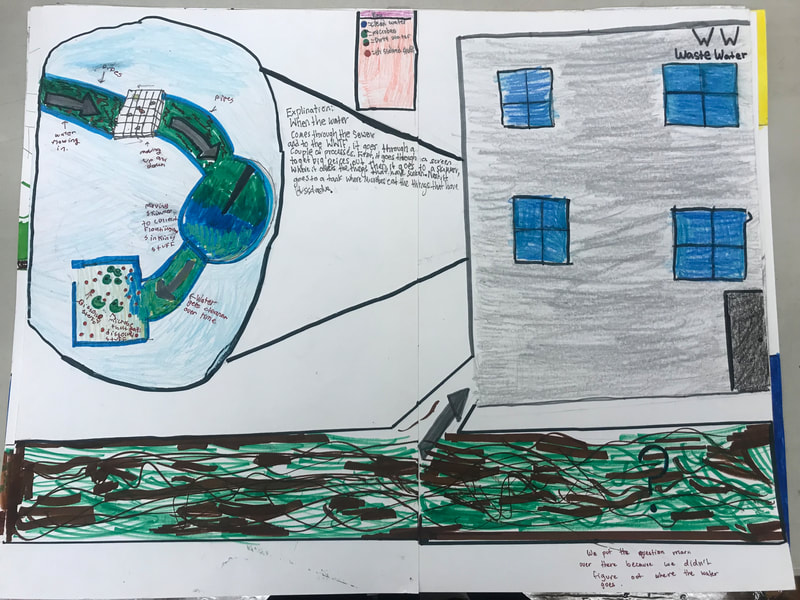
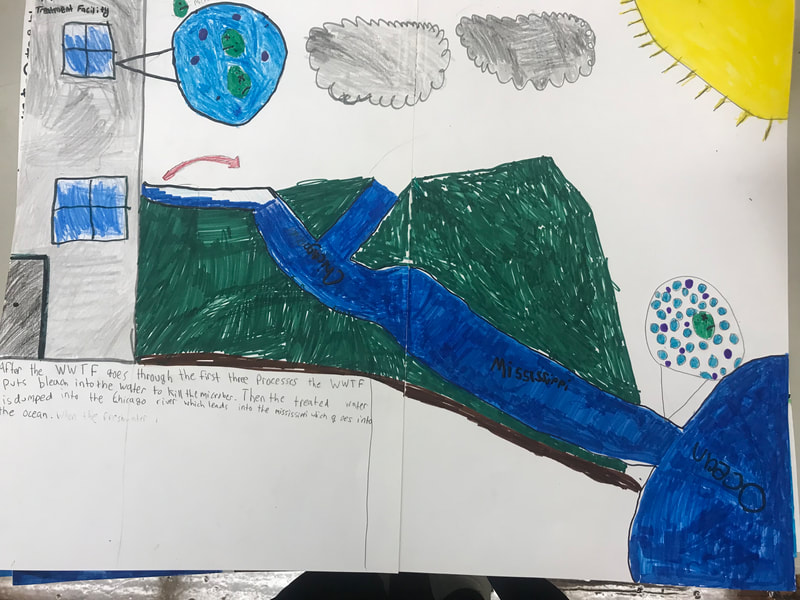
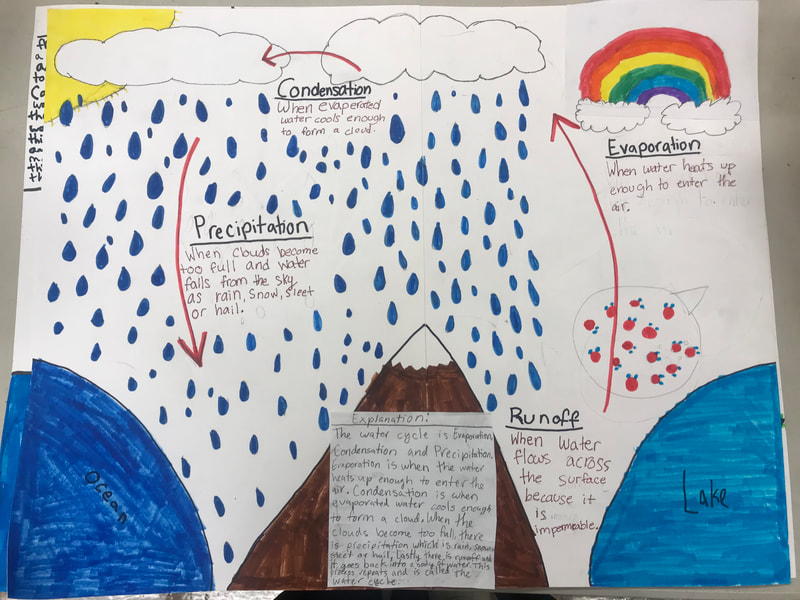
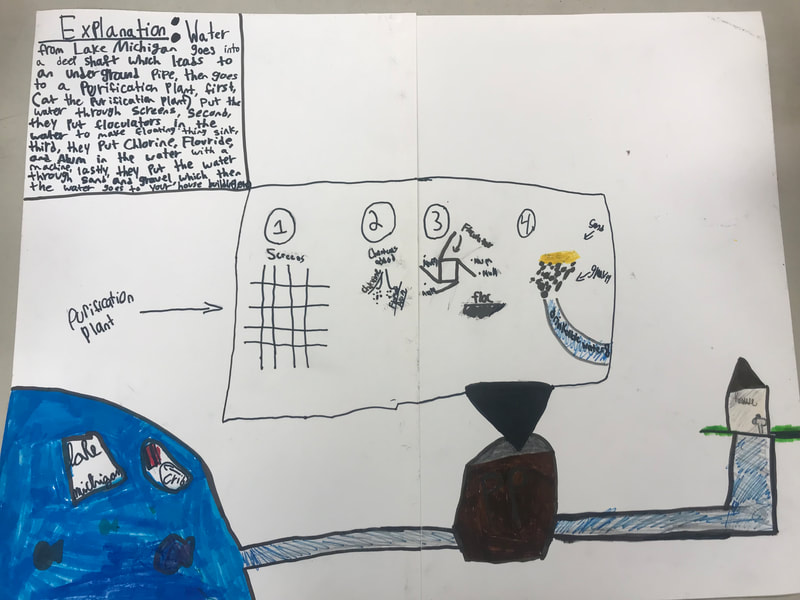
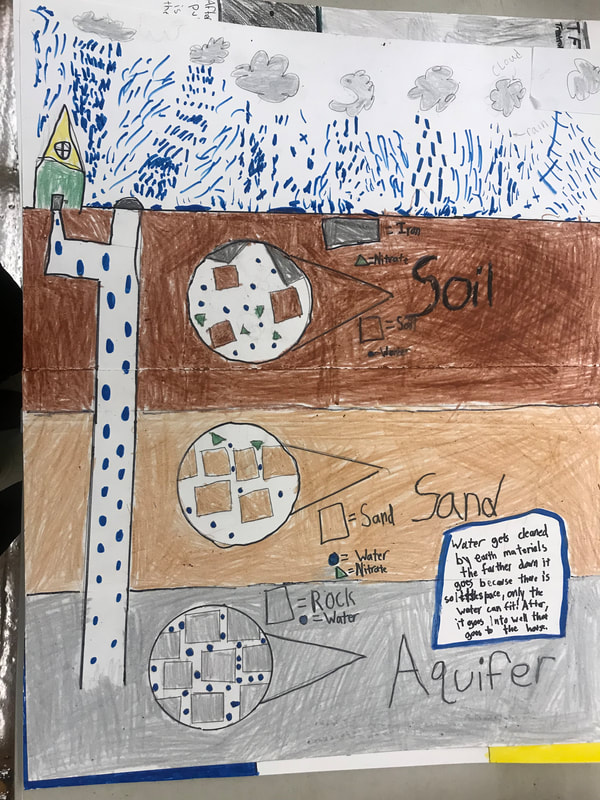
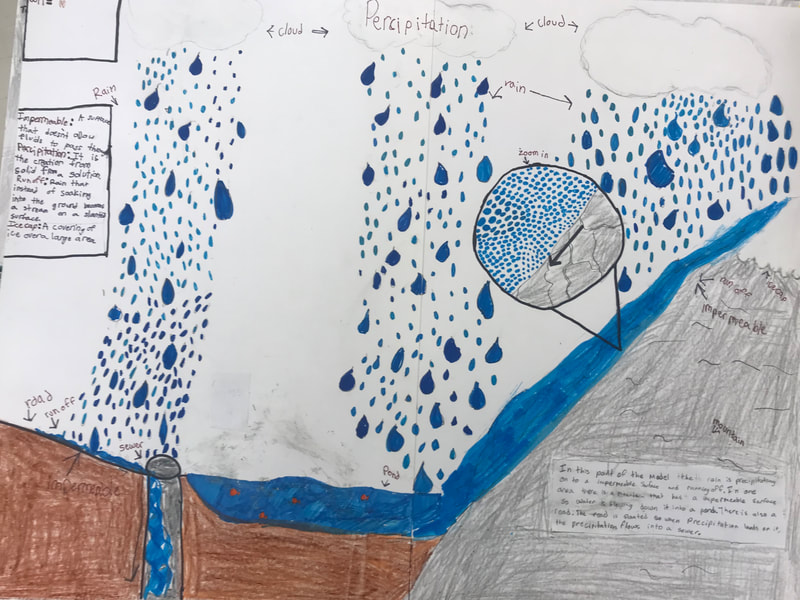

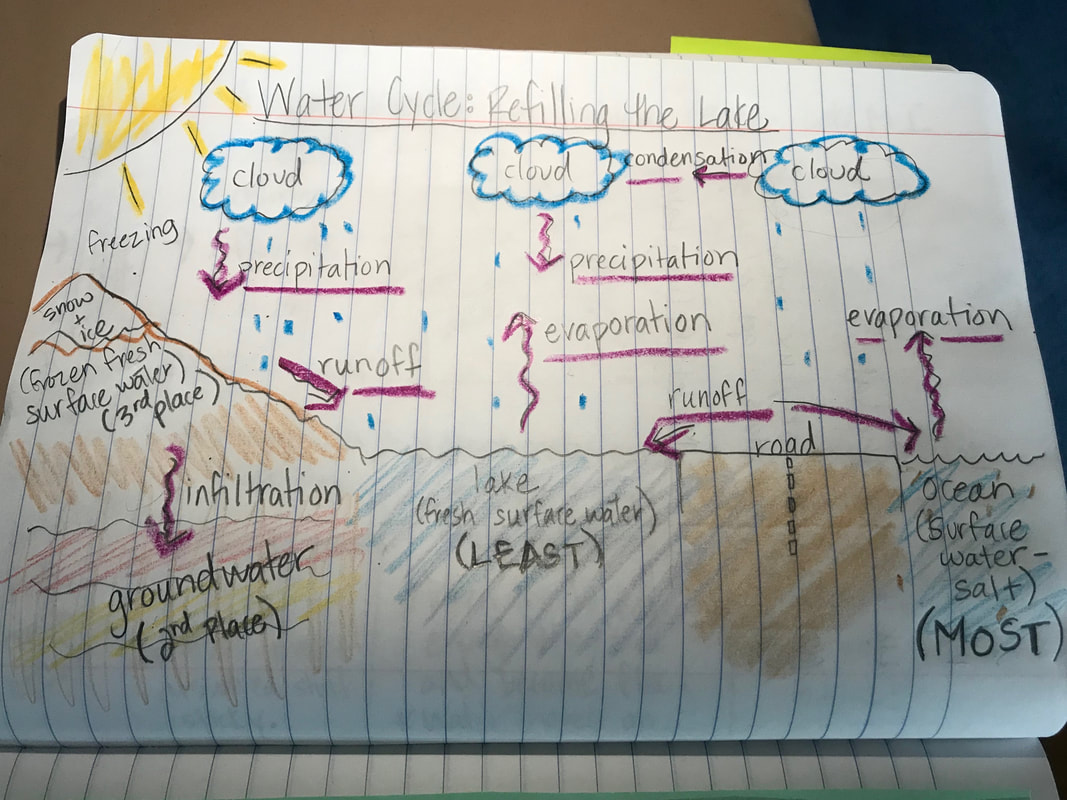
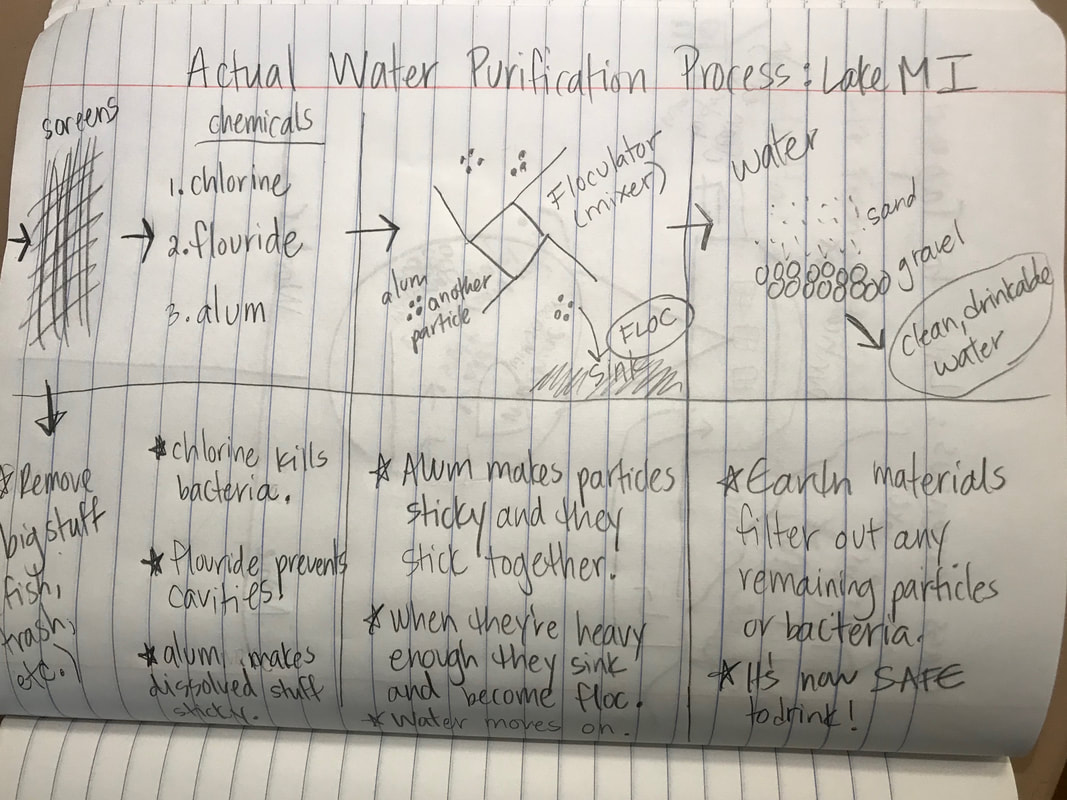
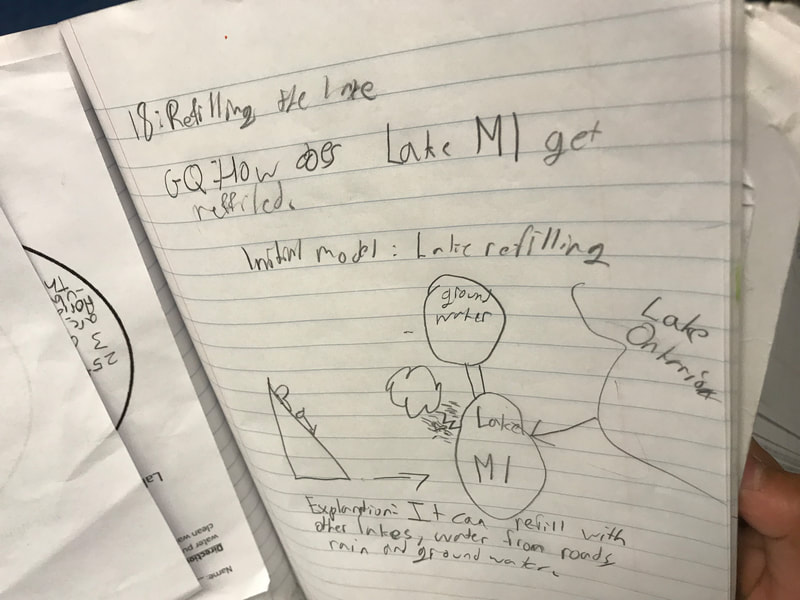
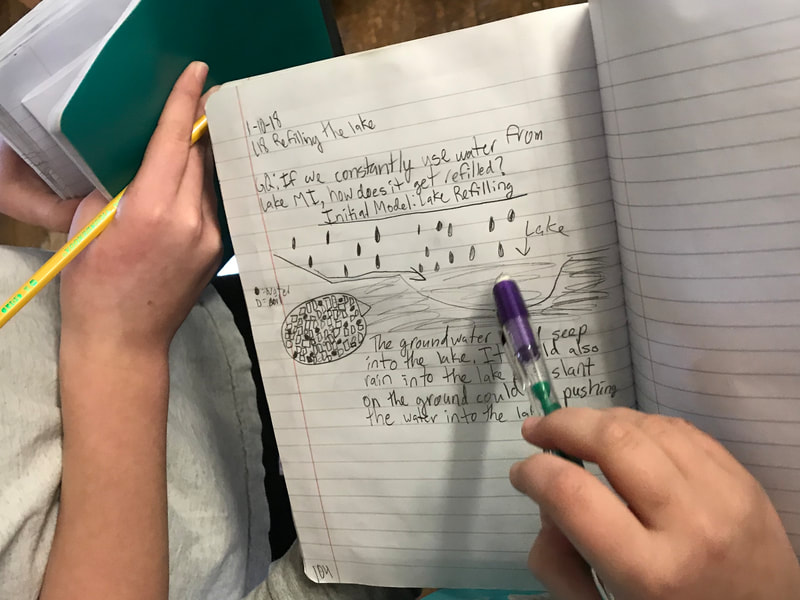
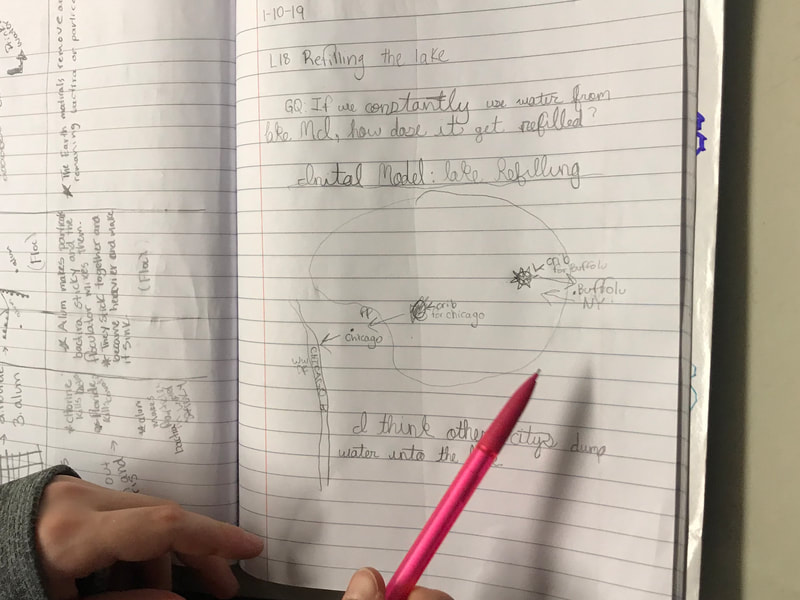
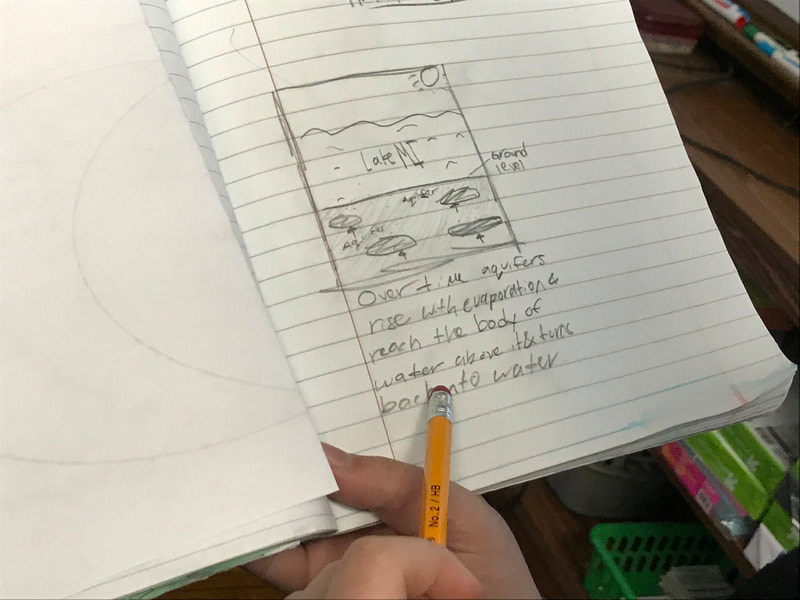
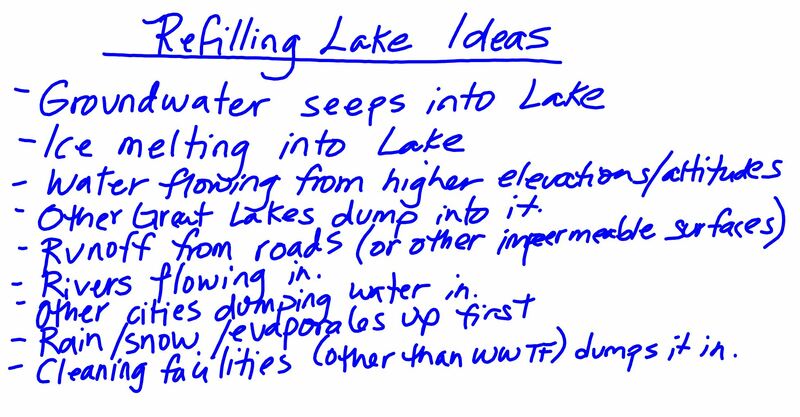
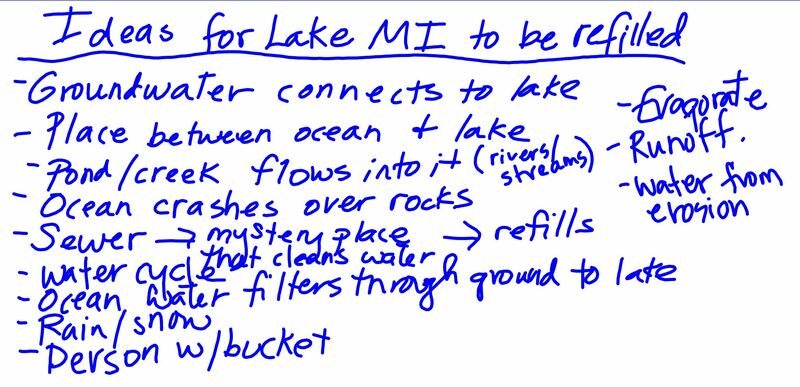
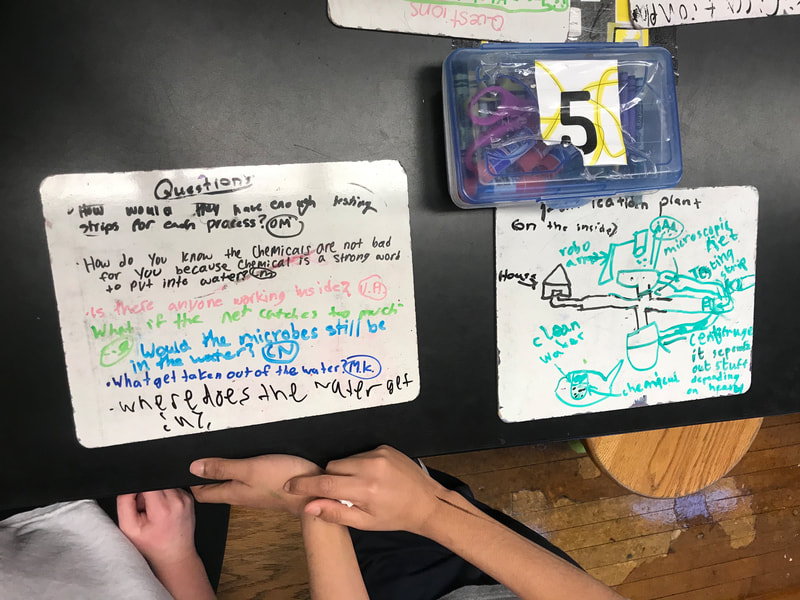
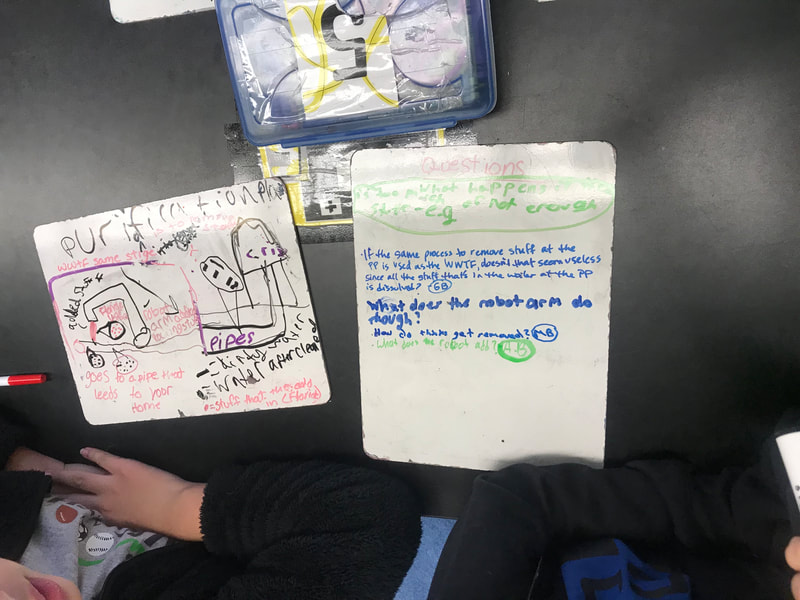
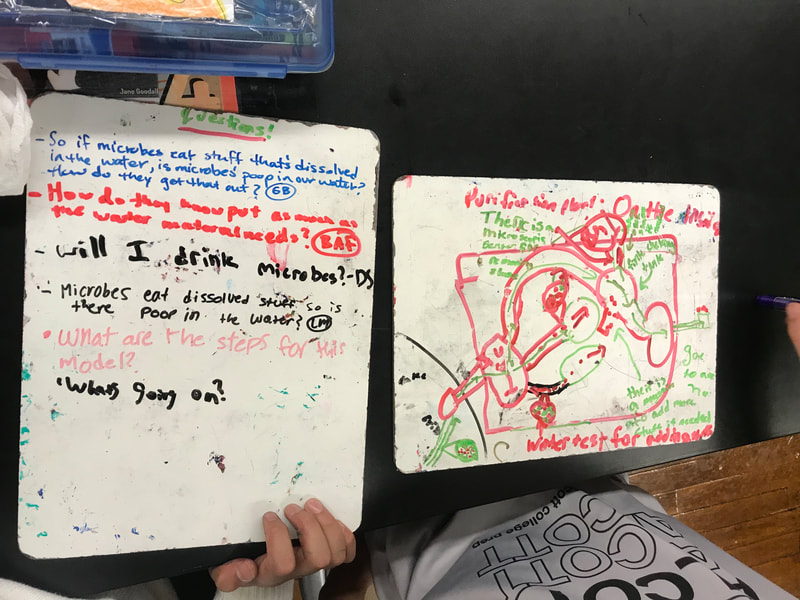
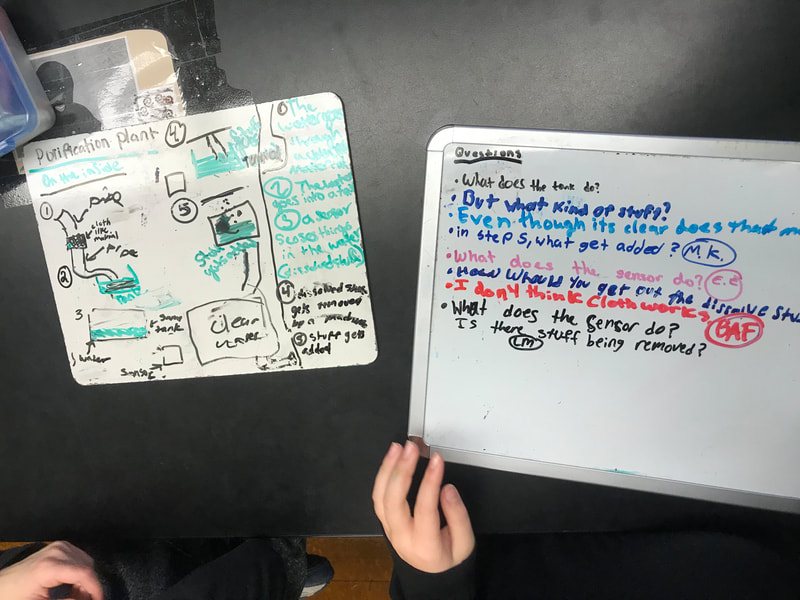
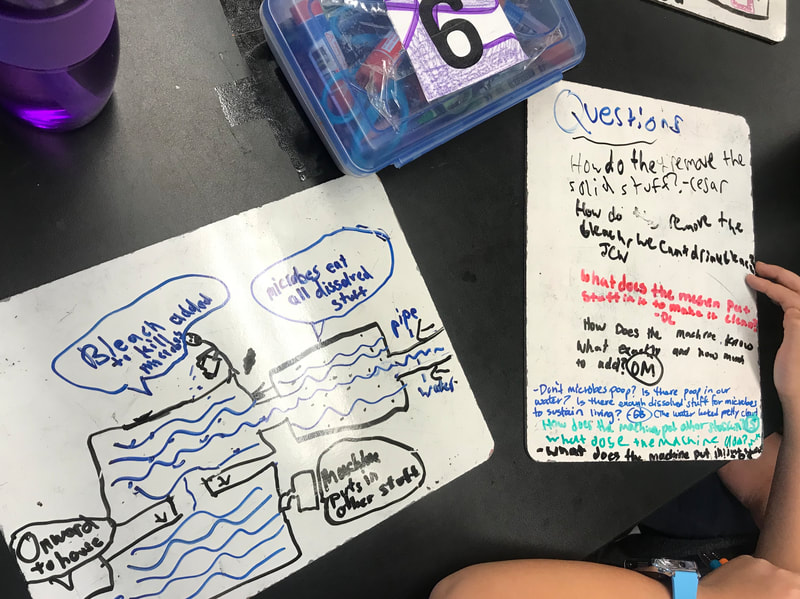
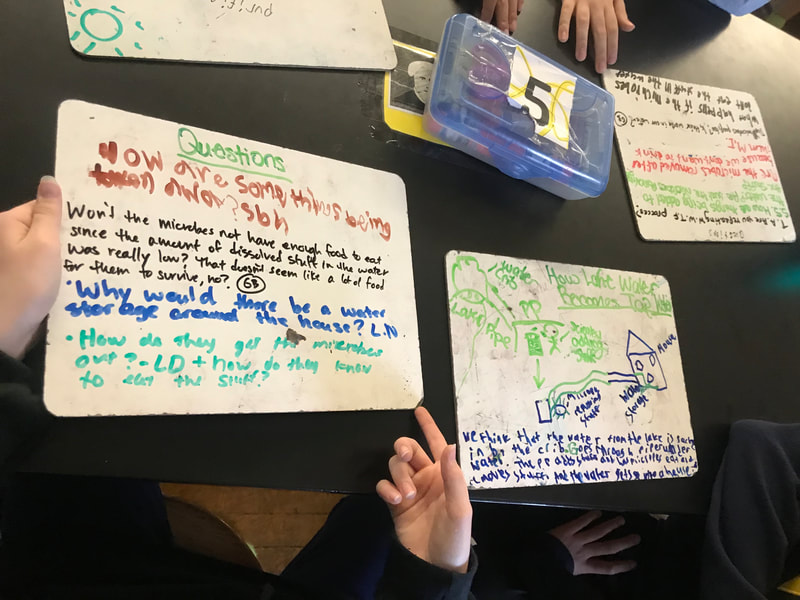
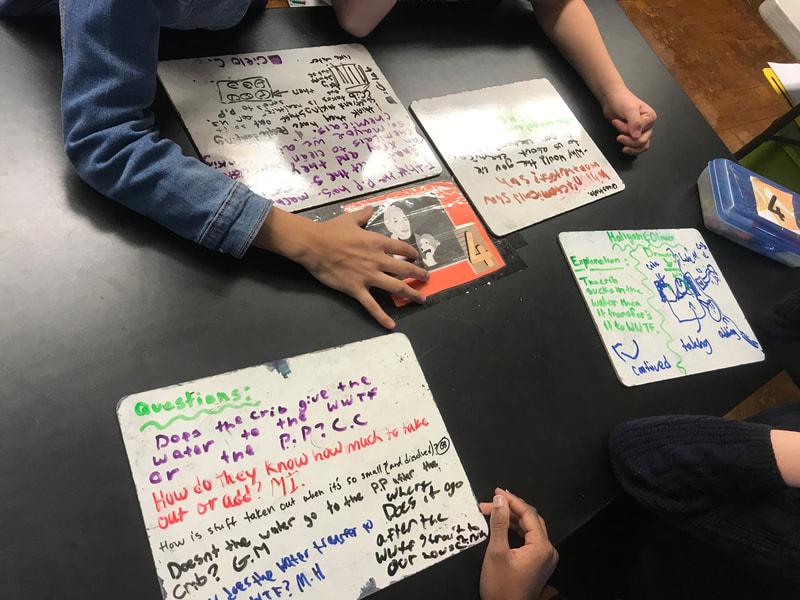
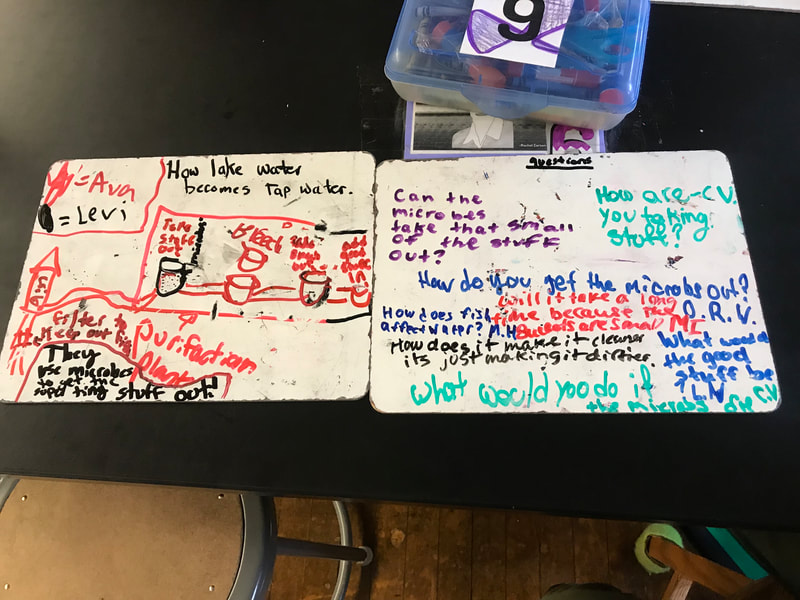
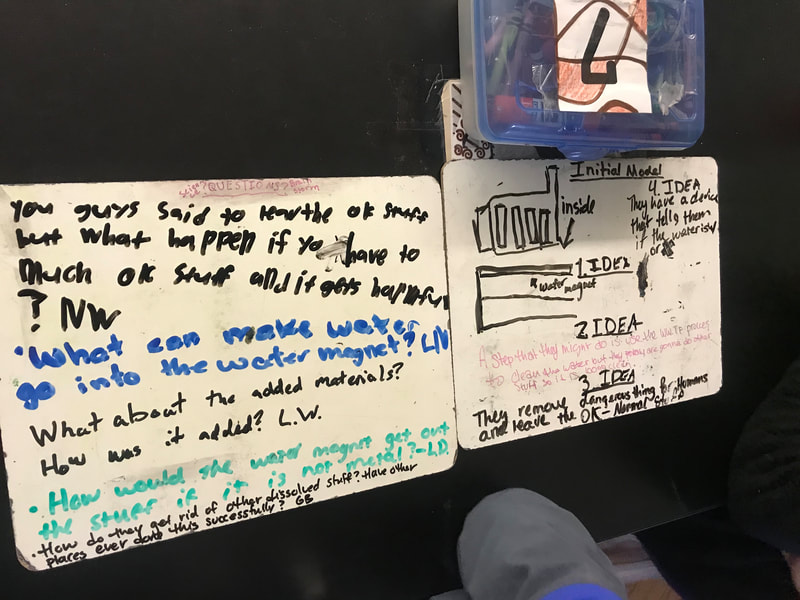
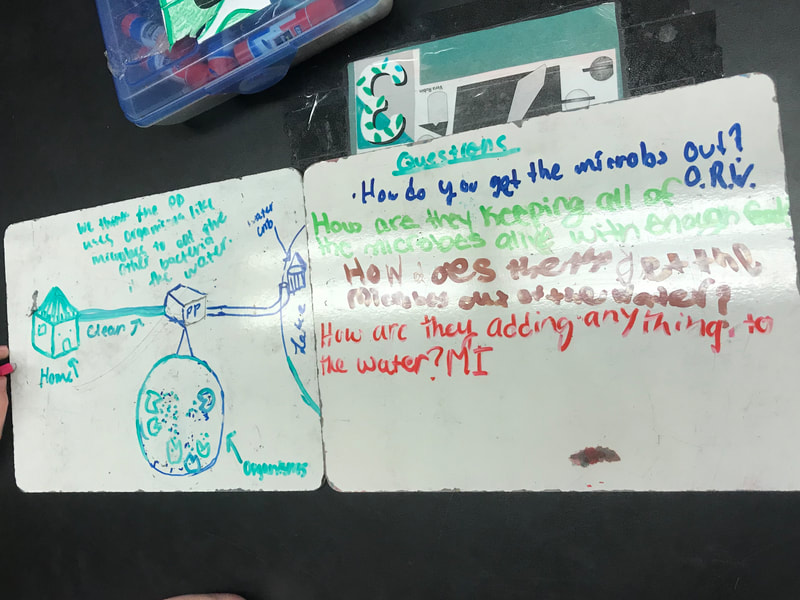
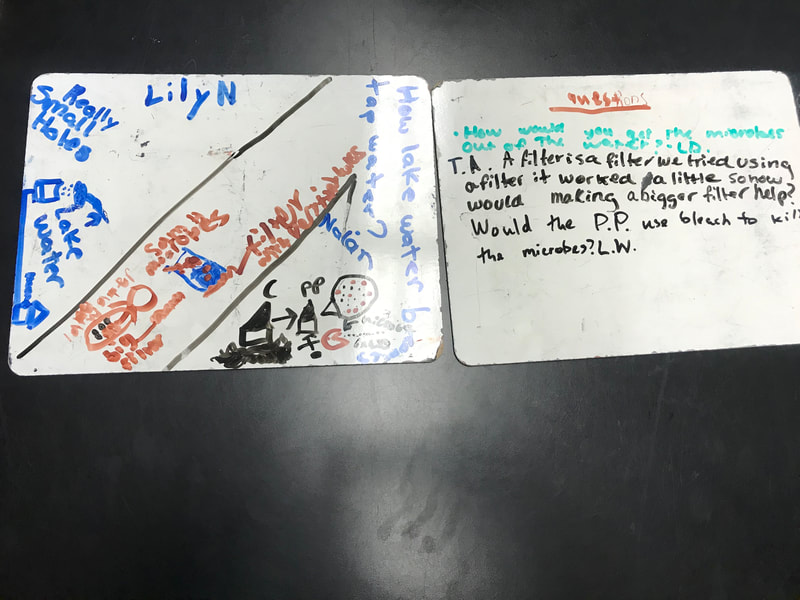
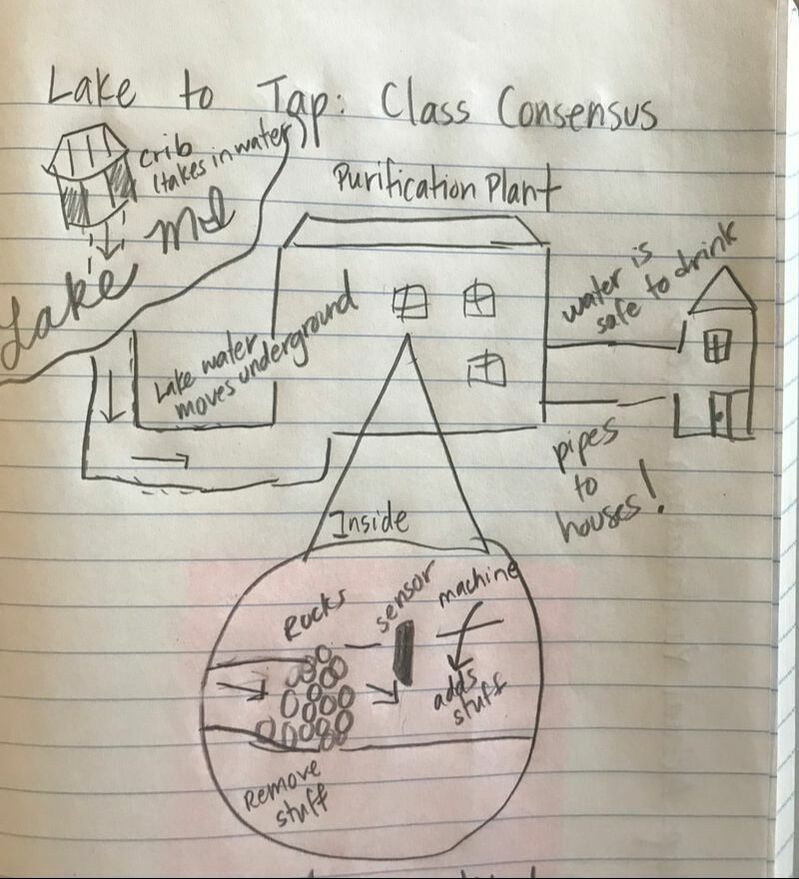
 RSS Feed
RSS Feed